
- Sea Striker
- Shoreline Marine
- Propel Paddle Gear
- HQ Outfitters
- Deals on All Brands
- About Calcutta
- All Products
- Tackle Storage
- Tools & Knives
- Lures & Baits
- Terminal Tackle
- Men's Apparel
- Women's Apparel
- Travel Bags
- About Star Rods
- Explore Saltwater Series
- American Spirit Series
- Are you a RODSTAR?
- World Records
- Find a Dealer
- About Got-Cha
- Got-Cha Pro
- Got-Cha Original
- About South Bend
- Rods, Reels & Combos
- Line & Leader
- Bait Traps & Baskets
- Surf & Pier Gear
- Trolling Gear
- Gaffs & Nets
- Crabbing Gear
- Creels & Accessories
- Lures & Rigs
- Lighting & Electrical
- Motor & Fuel
- Anchoring & Docking
- Safety Equipment
- Trailer Equipment
- Accessories
- Paddles, Oars & Poles
- Anchoring & Fishing
- Lighting & Safety
- Transport & Storage
- All Coolers
- Hard Coolers
- Soft Coolers
- Fish Coolers & Kill Bags
- Cooler Accessories
- All Men's Apparel
- Fishing Shorts
- Hats & Accessories
- All Women's Apparel
- Handcrafted
Your cart is empty

20 Items to Bring on A Deep-Sea Charter Fishing Trip
May 13, 2021
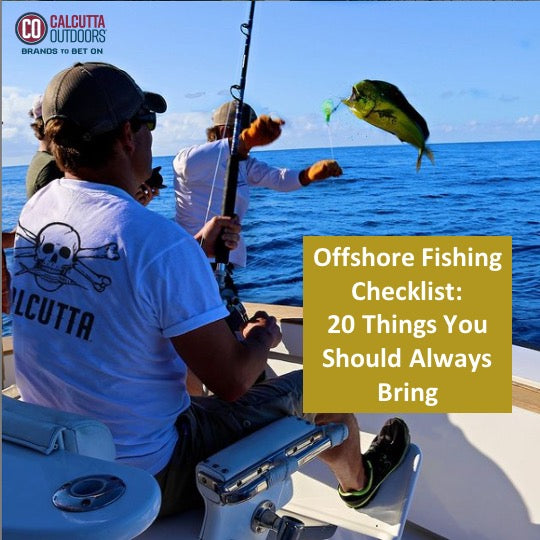
Few things are more exciting than heading offshore to chase marlin, tuna and other saltwater monsters—except maybe hauling in heavy grouper, snapper and bottom fish from the ocean’s depths. There’s never been a better time to book a deep-sea fishing trip. To help you prepare for the adventure, we’ve created this checklist of 20 essential items that you should always carry.
Rods , reels and bait are provided by the charter service, but there’s more than just fishing tackle required for a memorable offshore experience. Comfort is critical and a key ingredient to maintaining the edge needed for those line-stripping runs. Our list of essentials to bring on your first deep-sea fishing trip includes many items overlooked by first timers and a few others that will help you sail through the day like an old salt.
Mandatory Items First
Daily Medicine —Bring an adequate supply of prescription(s) you take daily. It’s unlikely the captain will turn back to shore once underway, unless there’s a life-threatening emergency. Missing one blood-pressure pill may not qualify, so bring enough for the entire trip. Extra is better, just in case weather or mechanical problems delay your return.
Motion Sickness Preventive —Bring seasickness/motion sickness medicine, even if you’re among the lucky few who have never experienced the nausea and discomfort. Those particularly prone to the condition should consult with their physician for a prescription. The inexpensive remedies available at drug stores work for most fishermen, though, and they’re great insurance to have on hand just in case.
Fishing License —More than a few trips have been spoiled when an angler discovers he or she doesn’t have their fishing license. In many cases you can purchase one at the dock, but don’t rely on using your credit card. Bring cash, just in case.
Some states, including Florida, North Carolina and South Carolina, do not require you to have a fishing license if you’re aboard a licensed charter vessel. It’s always best to check with the charter service that you’ve hired, or consult the state’s fish and wildlife website prior to your fishing trip.
Protection from the Sun
Hat —A warming sun at sunrise quickly turns glaring and baking in hot weather. Bring a hat to shade your eyes and protect your head. Bonus points go to those wise enough to choose a wide-brimmed version that shelters the nose, ears and a portion of the neck. Shop Headwear
Neck Gaiter —They stuff into the tiniest bag corners, last for years, weigh next to nothing and quality versions are so breathable you hardly know you’re wearing one. It’s the kind of added protection from the blistering sun veteran offshore fishermen rely on. For those times the water’s reflection is burning into those places the hat promised to shade, simply pull it up to cover your ears, chin and nose when needed. Shop Neck Gaiters Sunscreen —Sunburns hurt and needlessly drain energy, which makes sunscreen/sunblock a key item. Sun exposure while on the water can nearly double, so a liberal application before or as you leave the dock is wise. Repeat the procedure throughout the day. Bring plenty because someone always forgets theirs.
Sunglasses —Lengthy exposure to the sun is fatiguing and can even damage the eyes with enough unprotected exposure. A quality pair of sunglasses remedies the problem and lets you see through glare and into the action below that can be undetectable otherwise. Polarized lenses perform best at the task, but any sunglasses you choose need to be comfortable enough for all-day wear. Shop Sunglasses
Lip Balm —Sun, wind and salt spray dry everything, which makes lip balm another key ingredient for comfort. Get one with a minimum 15 SPF rating for added protection.
Long-Sleeve Shirt —Lightweight and breathable is best, but make sure it’s long sleeved. Today’s high- performance fishing shirts have UPF protection built right into the fabric. Dress in layers on cold mornings because you can always peel some off to maintain comfort as the temperature rises. Shop Sun Protection Shirts
Fishing Accessories
Hand Towel —You’re on the water, things get wet and you’re probably going to sweat during and after that first big hookup. The first mate’s priorities don’t always include handing them out, so bring a hand towel. Shop Bait Towels
Wet Wipes and Hand Sanitizer —When it’s time to enjoy a snack or lunch, you’ll want clean hands. While mates on private charter boats typically do much of the dirty work, you’ll find yourself handling both bait and fish on a deep-sea party boat.
Gloves —Fishing gloves are wise for a variety of reasons, even if the charter’s staff handles the catch on board. They won’t be carrying it to your vehicle or transferring it into your cooler. Gloves also come in handy any time extra protection is needed.
Rain Gear and Footwear
Rain Jacket —You can never be too prepared. Today’s high-tech, lightweight rain jackets take up so little space. You’ll never even know it’s there—until, that is, an unexpected squall rolls in or it’s pouring when you get back to the dock.
Non-Skid Footwear with Closed Toes —Sandals aren’t appropriate when you’re going to be boating toothy fish and baiting sharp hooks. Wet decks and rocking boats make soles that maintain their grip the best way to remain upright during your trip. Save those sandals for grilling out when you get home.
Additional Gear
Cooler —You need something to bring your catch home, so pack a cooler and leave it in your vehicle. Stuff it with ice in the morning, and the cooler will be chilled enough to get that limit of fish to the fridge fresh and unspoiled. Shop Coolers
Drinking Bottle —It won’t take long for the salt air and the fishing action to make you thirsty. Some charter boats provide drinks and snacks, but many require you to bring your own. Regardless, it’s always a good idea to bring along a water bottle or tumbler with a spill-resistant lid filled with water or your beverage of choice. Shop Drinkware
Fish Bag —It can be a long walk back to your vehicle if you’re hauling a heavy load of fish. An insulated fish cooler bag helps you easily shoulder the load while keeping your catch cold and fresh. Have a gunny sack at home? You can wet it down and you’re ready to carry your fish off the boat in fewer trips. Shop Fish Cooler Kill Bags
Cell Phone with Camera —Don’t let that once-in-a-lifetime trip become a faded memory. Bring a camera or carry a cell phone that produces quality images. Saltwater and electronics don’t play together well, so stow them in a sealed plastic bag . Turn on the flash when you do take it out for a photo to capture more lifelike colors and reduce shadows under your hat. You’ll be ready to post that catch-of-the-day photo on Facebook and Instagram as soon as you arrive back at the dock.
Cash —Cash on hand ensures you can tip the crew, get your license and pay for fish cleaning without walking the dock in search of an ATM.
Waterproof Bag —Things often get wet on an offshore fishing boat. It’s always a good idea to store your electronics, wallet, and other important items in a dry bag . While a zip-lock bag will suffice, waterproof dry bags with roll-top closures and welded, waterproof seams are the best choice. They’re durable, perfect for deep-sea fishing trips, and often feature a shoulder strap for carrying. Shop Dry Bags
Check with Your Fishing Charter —Charter services routinely provide rules and recommended gear to bring onboard. Following them improves your experience, ensures safety and often addresses conditions specific to the exact area you will be fishing. Check the charter boat’s website or contact them before your trip to make sure you have everything you need.
Visit a Local Fishing Tackle Store —Before you set foot on a charter boat, stop by a local bait and tackle store—or two. The tackle shop will likely stock many of the items on this list. And when it comes to anything related to fishing, tackle retailers are the experts. They will be happy to share their knowledge and provide up-to-the-minute fishing and weather reports.
Reading next
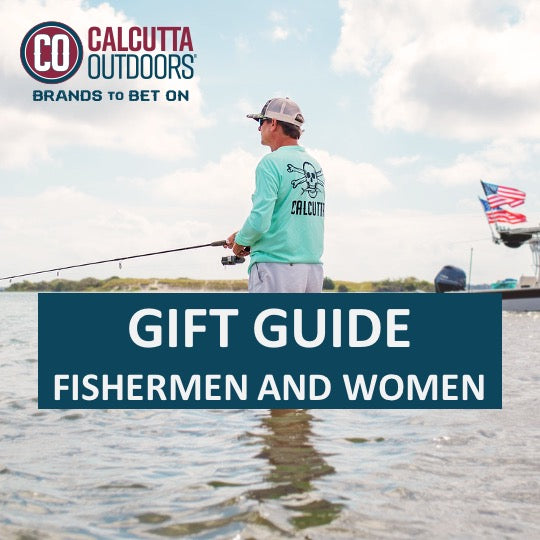
The Best Gifts for People Who Love Fishing
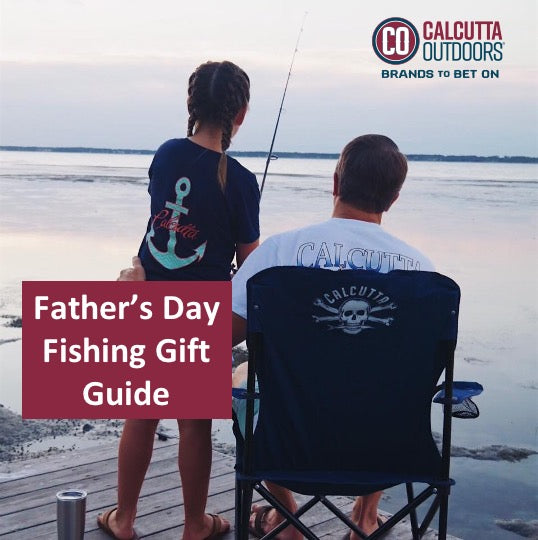
Top Fishing Gifts for Father’s Day 2021
Plan a Deep Sea Fishing Trip in 2023 (With Packing List)
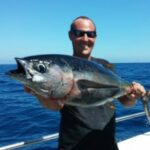
Geoff Stadnyk in Fishing On The Water on March 13, 2024 March 13, 2024

Your first deep sea fishing trip can be the trip of a lifetime (assuming you don’t get seasick ). Do you dream of pulling in a shark? Would you settle for a sea trout? Whatever you’re targeting, it’s time to start planning.
Travel for deep sea fishing isn’t – and shouldn’t be – a spur of the moment event ( unlike inshore fishing ). For your safety, and for the best catch, you’ll need to plan ahead. Here’s how to plan a deep sea fishing trip you’ll remember for years to come.
Choose Your Destination
When you’re planning a deep sea fishing trip, choosing your destination is almost as exciting as getting out on the water. Think about it: with over 95,000 miles of American coastline, to say you have plenty of options is an understatement. Thinking about an international trip? The world is just a charter away.
Don’t let all that saltwater overwhelm you. Choosing where you’ll wet your line is easy when you consider what you’d like to accomplish. Ask yourself a few questions:
- Will I stay within the states or travel globally?
- What is my budget?
- What fish am I targeting?
- How long will I be at my destination?
- Will I hire a group charter or a private one?
Once you’ve answered those basic questions, you’ll have a better idea of where to get started. Let’s assume you’re planning a trip within the United States. You wouldn’t mind staying a week or so, and you certainly wouldn’t mind pulling a few mahi-mahi into your boat.
Now you’re starting to narrow it down! You already know that, say, Maine isn’t going to be your destination this time. Do a little research now, and talk to experienced fishermen either in person or on online forums. Don’t be afraid to ask questions! Fishermen love little more than to talk about fishing!
Once you’ve got a general idea of the general geographical area and the body of water you’re going to visit, it’s time to plan a bit more in depth.
Choose Your Charter
If you’re an experienced shore fisherman, you may be tempted to charter your own boat and head out with a few friends. We strongly advise against that.
Deep sea fishing is a completely different animal to inshore fishing like fishing from a pier or surf fishing from the beach , and you’ll want an experienced guide. Not only will your guide help ensure your safety throughout your trip, they’ll also be experienced in those specific waters – that means prime fishing for you.
With that in mind, there are three general types of charters you can hire. Let’s look at your options.
Private Charter
The first is a private charter. A private charter is a boat that’s hired solely for you and your friends. The group will usually pay one set fee, and you’ll generally be given to option to rent onboard equipment or bring your own.
Group Charter
The second is a group charter. You and your group can still fish together, but you’ll be sharing the boat with other small groups with similar interests. There are typically from six to 15 or so people in a group charter, and your boat will be around the 20-foot ballpark. Group charters are great if you want a slightly more cost-effective trip and don’t mind a few friendly strangers.
Offshore charters can be either private or group-based. Private charters offer exclusivity, allowing individuals or groups to book the entire boat for themselves and customize the trip. Group charters, on the other hand, enable individuals or small groups to book spots on a shared boat, offering a more economical option. Private charters provide privacy and tailored experiences, while group charters offer affordability and the opportunity to meet new people.
Both private and group charters have their own advantages and appeal to different types of customers, so it’s essential to inquire with the charter company about their offerings and choose the option that best suits your needs. You might want to consider an offshore fishing charter, where they provide all the gear . That way, you can focus on the experience without worrying about equipment.
Offshore fishing charters are popular for their access to deeper waters and larger fish species. Whether opting for a private or group charter, these trips offer memorable experiences for anglers of all levels. Be sure to communicate your preferences, such as targeting specific fish species or focusing on certain techniques, to ensure the charter meets your expectations. With the right choice, an offshore fishing charter can provide an exciting adventure on the open seas.
Your third option is to charter a party boat. Party boats are a fantastic option if you’re just testing the waters of deep sea fishing, so to speak, and want an affordable option. You’ll be on board with a larger group of people – there’s a minimum head count required for most – so if you’re not into the social aspect of fishing this may not be a good option for you. You also may not learn quite as much on a party boat as on a smaller charter.
While many more serious fishermen might be annoyed if you’re in the area just make sure you’re respectful (and that the captain knows how to properly pass a fishing boat ) and you shouldn’t have any issues.
The charter you choose is solely up to you, your budget and your social preferences. (Don’t forget, it’s customary to tip the captain, so factor that in!) Check out reviews, target species and especially charter licenses before you embark.
Where Will You Stay?
Now that you know the general area you’ll be visiting, it’s time to choose your lodging. The possibilities are going to rely on your charter in many ways, but in others it’s all about what you prefer. When you’re booking your lodging, consider:
Most charters leave early in the morning, especially if you’ve booked an all-day trip.
Hotels and lodges around fishing hot spots book up fast and charge higher rates “in season”
Many fishing hot spots are home to quite a few eclectic fishing cabins and cottages
Even if they don’t fish, your family may want to join you and enjoy local attractions
Do some research online and with your destination’s Travel Bureau. What do the locals recommend? Is the lodging close to your charter, allowing for a quicker commute in the morning? Are there amenities on site or local attractions your family will like? Do you need modern accommodations or is a rustic cabin perfect for you?
As with just about every other step of planning your deep sea fishing trip, the hotel you choose has a lot do with your personal preference! This trip will be exciting and memorable no matter what, but it certainly helps to have a convenient, comfortable place to rest your head at the end of a long day.
Pack Your Bags and Go!
Depending on where you’re traveling, what you pack in your suitcase, how many rods you’ll take with you and your tackle box is going to vary. That said, some things are pretty consistent. Don’t forget to pack:
- Your fishing license , unless your charter covers this for you
- Sunblock and a protective fishing hat
- Fishing sunglasses
- Your camera
- Clothes you can layer (think cool mornings and hot afternoon sun)
- Non-skid shoes or fishing shoes
- Tackle recommended for your target, unless this is onboard.
- Cash for tipping
- A cooler to bring your catch home
It is also helpful for you to know the causes and remedies if ever you or someone with you gets dizzy when fishing .
When you book your charter, ask if there are any considerations you may not have thought of. For example, depending on what kind of fishing you’re g oing to be doing, many deep sea fishermen will recommend an electric fishing reel to help with the big boys. Even something as simple as being unprepared for a mid-day Florida rain can turn a great trip uncomfortable very quickly. Check out our helpful guide for what to wear while fishing to get some ideas of what to pack.
Pack for safety and comfort, and don’t worry about the rest. It won’t ruin your trip to forget a toothbrush, so there’s no sense stressing. Remember – your first deep sea fishing trip is the trip of a lifetime. Plan carefully, then relax and just enjoy the experience!
Geoff started fishing as a child in the gorgeous lakes of Mammoth, while on family vacations. His fishing experience includes the use of fly rod and reel. Guided trips along the Madison and Gallatin rivers in Montana, the Frying Pan and Animus in Colorado, and the Deschutes river in Oregon have all paid off and helped make Geoff the angler and writer that he is today.
As an Amazon Associate, Fishermen's Angle earns from qualifying purchases. We get commissions for purchases made through links in this post.
We promise you, we won't flood your inbox. Subscribe today and join our fast growing fishermen community. Receive the latest only from the best!
Book Your Next Florida Fishing Charter Adventure Today - 321-652-5903

What to Bring Charter Fishing: The Ultimate Checklist

June 21, 2018
You’ve been traveling all day, but you’ve finally made it. You’re in beautiful, sunny Florida and it’s vacation time! Your days here are action-packed, but the one thing you’re looking forward to most is heading out into the open ocean off Cape Canaveral with a professional, experienced deep sea fishing charter. There’s only one problem. You have no idea what to pack!
Don’t panic! Whether you’re experienced or need some deep sea fishing tips for beginners, here’s Fin and Fly’s ultimate deep sea fishing guide to what you should bring along.
Clothing: What to Wear Deep Sea Fishing
When heading out onto Florida’s beautiful Space Coast, the most important thing to remember is that the weather may change. The Sunshine State lives up to its name, but it pays to be prepared! You want to make sure you’ll be comfortable when hauling in your catch.
- Rain gear or windbreaker. These are essential for protecting you from anything from downpours to sea spray! Both will keep you warm if you find yourself a little chilly in the early morning.
- Light clothing. Shorts, a t-shirt, or a light long sleeve shirt will keep you cool under the Florida sun.
- Hat. This will help keep your head cool and the sun out of your eyes.
- Polarized sunglasses. These are a must! Polarized sunglasses protect your eyes from the glare off the water. All the better to see your catch with!
Sunscreen: Fishing Sunblock
The strength of the sun should never be underestimated, even on cloudy days! You don’t want a sunburn ruining your day. You’ll be wincing every time you cast! The reflection of the sun off the ocean is often nice to look at, but not so nice on your skin.
- Check the SPF! Typically, SPF 50 and above are the sunscreens that are going to give you the highest possible protection from the sun. This is not the time to break out the tanning oil!
- Chapstick or lip balm. Chapstick with SPF or sun protection will be a huge help and will stop your lips from getting burnt or chapped out on the water.
- Zinc. Yeah, your nose will look a little funny, but lifeguards swear by it!
First Aid: Deep Sea Fishing Preparation
The phrase “don’t rock the boat” doesn’t apply to the ocean waves. Whether you find your stomach easily upset by the motion of the ocean or find yourself with an unexpected cut, you can’t go wrong with packing a couple extras to make sure your trip is safe and comfortable!
- Motion sickness medication. If you’re likely to suffer from seasickness, this is a must. Take it an hour or so before your trip to make sure you’re not adding a little extra bait to the water.
- Extra band-aids. Larger first aid kits are provided on the boat, but it never hurts to be prepared.
- Hand sanitizer. You packed a great sandwich and you’re ready to dig in. Just make sure you get the fish slime off your hands first.
Food and Drink: What to Eat Deep Sea Fishing
Everyone’s gotta eat, and in the hot sun, you want to make sure you’re hydrated. Here are some fishing trip snacks and tips that are perfect for your day on the water.
- Thermos or large water bottle. A thermos or water bottle with a guarantee that your beverage will stay cool for long periods of time is perfect for a fishing trip.
- Sandwiches. Pack your favorite! But remember, hand sanitizer is your friend.
- Beverages. A cold, hydrating beverage that is perfect for a day at sea.
- Other snacks. Chips, granola, jerky, you name it.
What Fin and Fly Provides: Cape Canaveral, Cocoa Beach, and Orlando Fishing Charters
You’re all packed! Here’s a few things we made sure you don’t have to worry about.
- Fishing license. We’ve got you covered. You don’t need to obtain a fishing license to come catch huge fish with us!
- Bait. We have the best bait and lures around to make sure you catch what you’re looking for.
- Camera. We’ll make sure to get a picture of you and your catch that you can show off to all your friends. If you want to bring your own camera to take some pictures with, that’s fine too!
- Coolers and ice. For keeping your favorite beverages nice and cold.
Use this fishing trip checklist when checking out our charters out of Cocoa Beach, Cape Canaveral, and Orlando, Florida! Available to book online or by phone today!

- Book Your Trip
- Half Day Close Offshore
- Kingfish Trip (6-Hours)
- Shark Hunt Trip (6-Hours)
- Deep Sea Trip (8-Hours)
- Red Snapper Deep Sea Trip
- Blue Water Deep Sea Trip
- What To Bring
- Gift Certificates
- Galveston Attractions and Lodging
Blog Categories
- Amberjack (3)
- Black Drum (7)
- Bull Red (7)
- Deep Sea Fishing (25)
- Fall fishing (1)
- fisherman gifts (6)
- Fishing Charter (40)
- Flounder (9)
- Galveston Attractions (8)
- Galveston Fishing Charters (33)
- Red Snapper (9)
- Redfish (9)
- shark fishing (5)
- Sheepshead (8)
- Spring fishing (6)
- texas fishing charter (26)
- Uncategorized (3)
What to Bring On a Deep Sea Fishing Trip
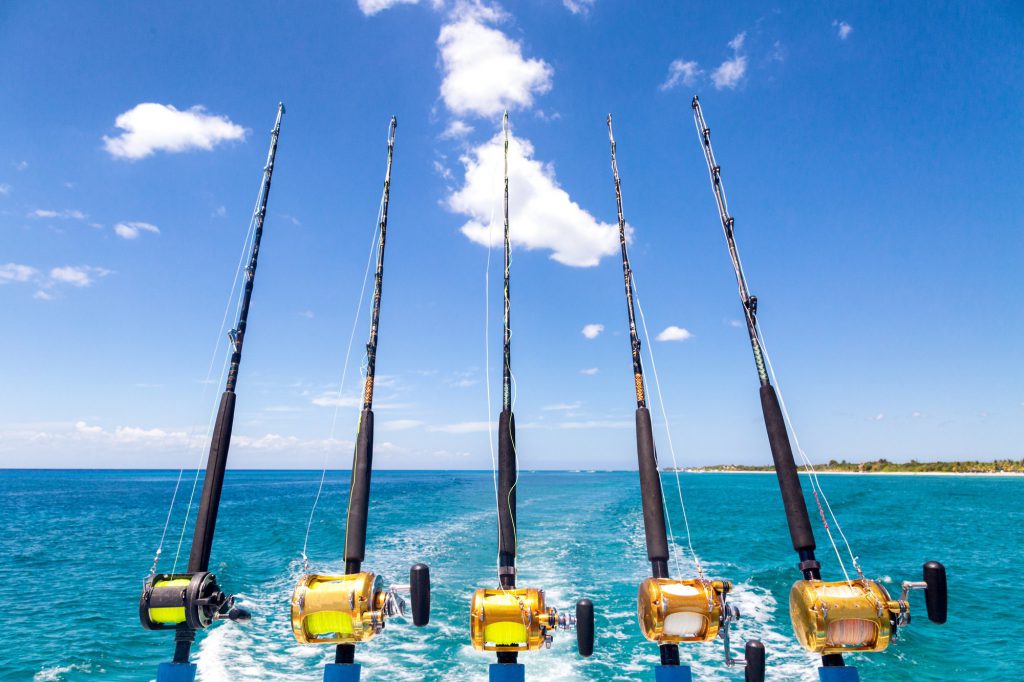
Your first deep sea fishing trip is going to be an amazing adventure. That’s pretty much guaranteed.
The big question remains: what do you need to bring with you?
For the first time angler, deep sea fishing can be something of a mystery. Coming along with that mystery is what you need in your backpack.
Read on and we’ll give you all the information you need when it comes to tackle choices, clothing, and everything else you should make sure is in your bag before setting out and into the blue.
Getting the Tackle Right
Your tackle is one of the most important things to get right from the outset. Where you’re headed out will largely determine the size of rod and reel that you need, but as a general rule, you can stay prepared for a blue water trip by making sure you have the right stuff on hand when you hit the charter boat.
Rods and Reels
The central part of your fishing tackle is always going to be your rod and reel. After all, pretty much everything else can be changed out while you’re on the water.
While most charter companies, like ours , offer rods, reels, and tackle many of you have a favorite rod you may want to bring along.
For deep sea fishing, a medium-heavy, 6′ to 7′ pole is pretty much the standard. A medium pole can be used for lighter fish, it really depends on what your target species consists of.
You’ll want to go with braided line for your reel for the most part. It’s much stronger than the regular monofilament lines. Something in the range of 20lbs-50lbs is ideal for most people, but if you’re going for particularly big game you may need to go higher.
Hooks and Lures
Hooks are another source of concern for many anglers. The truth is that hook sizes aren’t standardized between brands so it can be hard to figure out exactly what you need. Circle hooks in the range of 4/0 to 7/0 are ideal for most people.
If you’re bringing your own lures, then you’ll want to do research on the fish species you’re targeting. Each species has their own individual tastes and you may be best off using those which are included on the boat by those who know what they’re doing.
The Other Essentials
Apart from the regular stuff, you’ll also want to ensure that you pick up some swivels, weights ranging from 4oz-10oz, and anything else you might think will help you out on the water.
Each angler usually has a preferred setup but if you’re still completely in the dark find a service which offers tackle. You’ll learn quickly, especially if you’re going out on a regular basis.
Dressing Properly
Dressing properly for your trip can make a big difference in how comfortable you are. After all, it can get quite a bit colder on the ocean than you’ll be experiencing on land.
In addition to the regular temperature being lower, you’ll also have to deal with the increased wind chill .
Of course, it can also get quite warm on the ocean as well, depending on the weather. This means it’s best to dress in three or four different layers so that you can change your dress at your leisure to remain comfortable.
For most people that will mean at least the following:
- A heavy jacket with a hood
- A lighter jacket underneath
- A base layer or light hoodie
- A t-shirt or other casual undershirt underneath
That will give you four different variations of upper body wear. Others may wish to do the same with their lower body or at least pull on a pair of good pants over shorts.
The important thing is being able to adapt to whatever the weather may bring.
Other Necessities for a Deep Sea Fishing Trip
If you’re on a charter boat, then it’s important to be aware that different boats have their own rules for what you are and aren’t bringing on.
For instance, many will forbid alcohol entirely but our charters will allow you to bring beer as long as it’s not in a glass bottle. No hard liquor, however.
You’ll also want to bring some snacks, something for lunch, and probably a camera of some sort to document your catches.
Some of the other things people have found useful include the following:
- A collapsible ice chest
- SPF 30+ sunscreen
- Polarized sunglasses
- Seasickness medications
Just make sure to double check your bag the night before so that you can rest assured that you have everything you need.
Sunscreen is important no matter what time of year or the weather while on the open water. Between the lack of shadows on the boat’s deck and the fact that the water will be reflecting some of the sunlight, it’s easy to get burned even in weather you wouldn’t normally consider to be a threat.
Prepping Yourself
Deep sea fishing can be an exhausting matter, even for those who are used to it. Some simple suggestions can make your trip go a lot easier.
The biggest one is this : don’t drink heavily the night before setting out. It will increase your chances of getting seasick and a hangover can definitely ruin a day on the water even if everything else goes well.
On top of that, you’re going to want to make sure that you’re in decent physical shape. If you’re planned out a bit further it may be time to spend a little bit of extra time in the gym before your trip.
Start making sure you’re extra well hydrated in the days leading up to your trip as well. Starting to drink more water three days or so beforehand can make your trip a lot smoother.
Lastly, if you’re prone to seasickness, then you’ll want to take your medication about an hour before embarking so that it’s already in full-effect before you arrive in a choppy ocean.
Are You Ready?
If you think that you’re adequately prepared for a deep sea fishing trip, then what’s holding you back? It’s about time to go on the trip that you deserve.
Getting ready isn’t nearly as much fun as hitting the water with the intent of bringing in a brand new fish story.
If you’re thinking about contracting a charter fishing boat to take you out for the time of your life, then we urge you to book with us and set up a brand new adventure.
Two-piece rods, because of their heavy weights, tend to be very clumsy to use, especially if you’re just starting out. A one-piece fishing rod is a lot lighter and can allow even beginners to use them without any problems.
It really helped when you talked about deep-sea fishing and what clothes are better for it. My brother and I want to go on a fishing trip to celebrate his birthday next month. We’d like to know what we should prepare for our fishing adventure, so we’ll gladly read your tips carefully. We appreciate your advice on how to be comfortable while spending the day fishing.
The article has really peaks my interest. I am going to like your site and preserve checking for brand spanking new information from feed RSS :-).
After looking into a handful of the blog posts on your website, I truly like your way of blogging. I saved it to my bookmark webpage list and will be checking back soon. Please visit my website as well and tell me how you feel.
Comments are closed.
- 2024 BOAT BUYERS GUIDE
- MIAMI BOAT SHOW
- Email Newsletters
- Fishing Boat Reviews
- Fly Fishing
- Marine Electronics
- Fishing Tackle
- Fishing Destinations
- The Bahamas Fishing Guide
- Boating Safety

Packing for a Fishing Trip
- By Jim Klug
- Updated: May 19, 2017
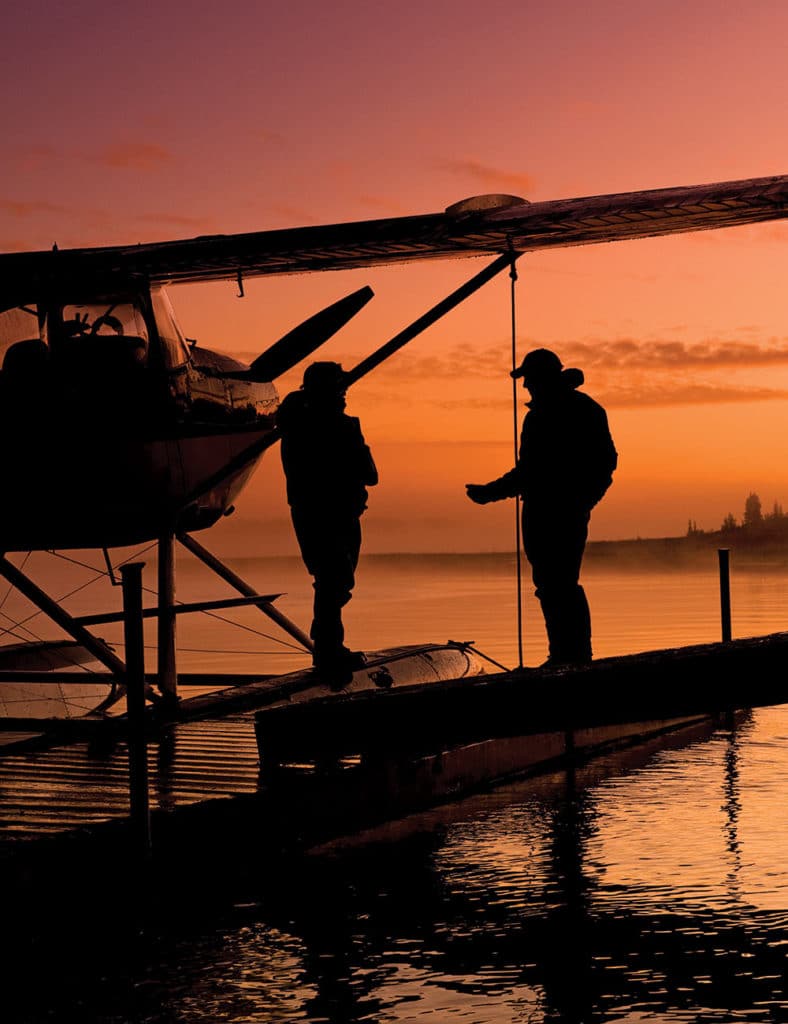
There is no doubt that many anglers have a love-hate relationship with fishing-related travel.
On one hand, you have the adventure and glamour of fishing far-off, exotic waters — opportunities to fish the kind of bucket-list destinations that every angler dreams of visiting. This excitement is frequently offset, however, by the fact that commercial air travel (and the process of checking in, dealing with security, deciphering luggage restrictions and being herded throughout the process like cattle) has made today’s flying much less enjoyable for most travelers. Flying with fishing gear only seems to add to these challenges.
A traveling angler almost always deals with additional hurdles as large amounts of gear, overweight bags, ungainly (and fragile) rod cases, overstuffed bags, and countless numbers of sharp hooks and bizarre tools are all common for destination fishing. When you travel with your equipment, you need to think ahead and pack only what you really need.
As the director of operations for a worldwide, destination angling company, I’ve spent more than 25 years fishing around the world. No matter where I go, I am usually loaded down with rods, reels, camera gear, communication devices and everything else typically associated with fishing and exploring distant waters. Along the way, I’ve managed to pick up several great travel habits and practices, and over the years, I’ve developed a system for packing that always makes my trips easier and more enjoyable.
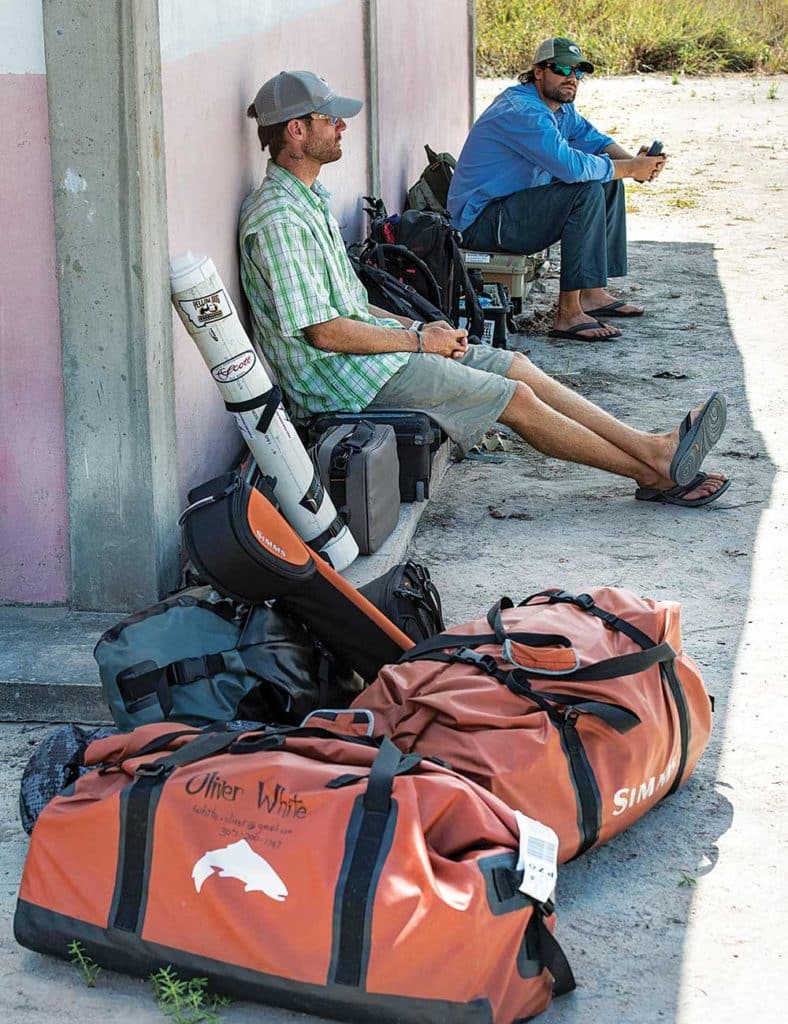
Cut in Half
For whatever reason, it seems to be human nature to pack too much, no matter where you’re headed or what you’re doing. As a part of my pre-trip packing ritual, I always lay out all clothing and equipment, and then try to cut the overall amount in half. I rarely wear all the clothes I pack and have determined that, in most fishing destinations, it’s easy to get by with far fewer clothes than one might expect. Almost every fishing lodge offers laundry service, which means you don’t need to bring as much clothing. So pack smartly for the specific area you’re visiting. Headed to the tropics? Leave jeans and heavy layers behind. Bring lightweight, quick-drying garments instead.
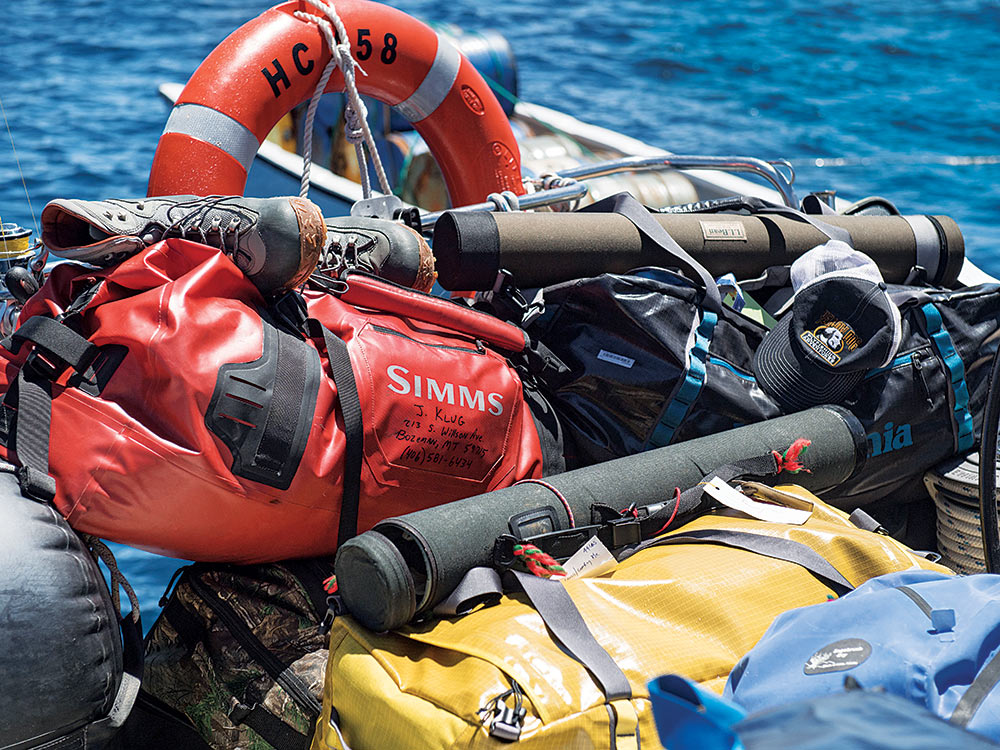
Stuff It Right
Think about where you’re going and pick the kind of bags that are appropriate for your destination. If your travels entail open boat rides or scenarios where bags may get wet (envision your bag sitting on the tarmac in a rainstorm), then go with a heavy-duty, waterproof duffel to keep your clothing and gear dry. If you’re headed to a lodge where everything comes and goes via small planes, leave the hard-sided, wheeled luggage at home and go with something soft-sided and easy for the guides and pilots to pack in tight spaces. Also, remember that when small airplanes are involved, weight is always a factor.
Divide and Conquer
When traveling to remote fishing areas that require multiple flights, skip the giant, single suitcase and consider packing two smaller pieces of checked luggage. Divide your gear between the two bags. That way, if one bag is lost or delayed, you’re still in the game. Even in the age of inflated fees, many airlines allow you to check two bags with no charge on international flights.
Critical Carry-On Items
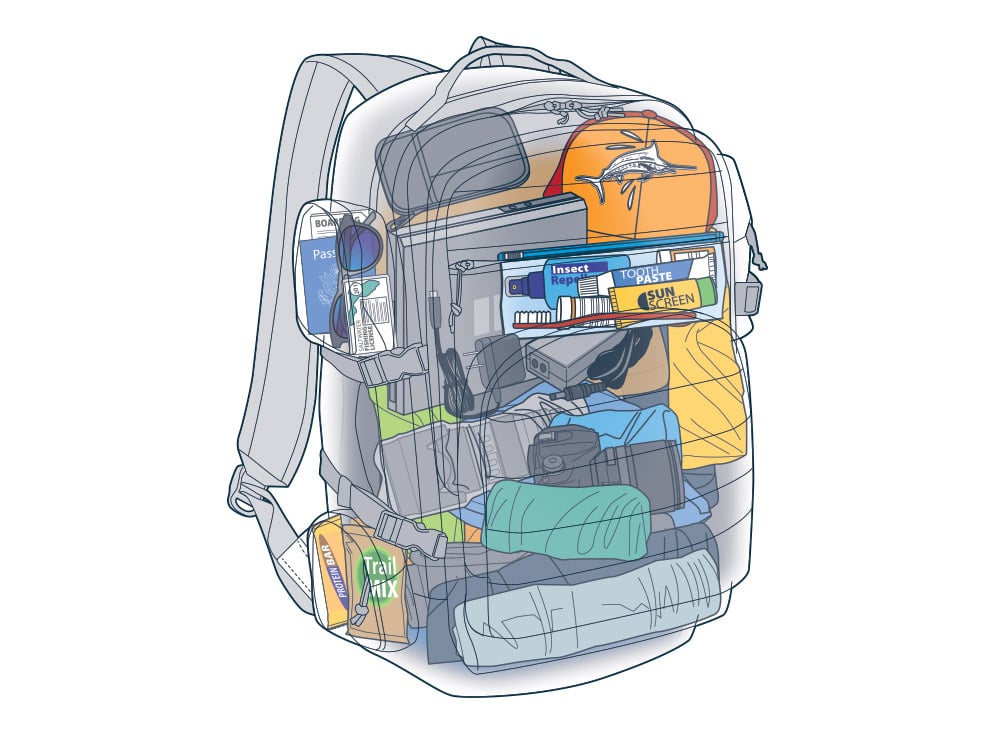
I always pack my most important items in my carry-on backpack or boat bag. This list includes fishing clothes, sunglasses, a hat, snacks, my laptop computer or iPad, camera gear, toothbrush, cash, important medications and essential travel documents. If my checked luggage is delayed or lost, at least I can survive and fish for the first couple of days with the items I’ve carried on.
Check or Carry On Rods and Reels?
This, of course, is a top concern of most traveling anglers. It used to be we always recommended people to actually carry on their rods, reels and other important tackle, and to avoid checking these items at all costs. With enhanced security and new rules and regulations, however, things have changed. Many foreign countries (including Canada, Argentina, United Arab Emirates, Venezuela, Cuba and several others) no longer allow anglers to bring rods, reels or even fly lines onto aircraft. Despite the fact that FAA rules state these items are technically allowed to be carried on, overseas TSA-type entities are too unpredictable and arbitrary when it comes to their policies for bringing these items through security. I once missed a connecting flight in Europe when I had to return to the main terminal to recheck my rod carrier. These days, I always pack all rods, reels and lines in my checked luggage, well-padded, protected and secured with a TSA-approved lock on my bag.
Charge Your Batteries
Whether you’re headed to the wilds of Alaska or a distant location like the Seychelles, fishing a remote destination often means either no power or limited electricity. Things can get difficult when it comes to charging cameras, laptops, iPhones and other electronics. It makes sense to have a portable mini charger when traveling. There’s nothing worse than holding the fish of a lifetime and realizing you’re dealing with a dead camera battery.
When traveling internationally, be sure to bring the right electrical adapters and converters as well. One useful item to always pack is an all-in-one international electrical converter — a small device available in most electronics stores and airport gift shops.
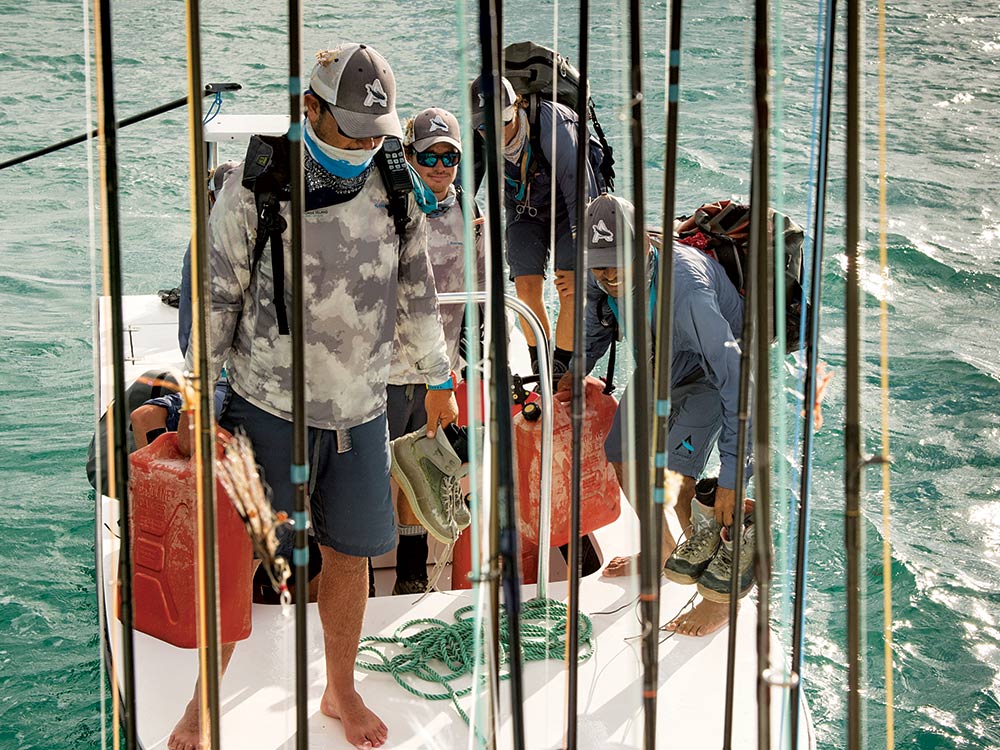
Bring Extra Cash
It’s always a good idea to bring along extra cash when traveling out of the country. Obviously, the farther off the grid you go, the fewer ATMs you’re likely to find. On top of that, remote fishing lodges, hotels and restaurants usually do not take credit cards, and we all know old-school traveler’s checks have largely become a thing of the past.
Whenever I travel to foreign countries, I often end up using more money than I planned, which is why I stash several hundred dollars in backup emergency cash that I can access if needed. Remember, it’s better to have it and not spend it than to need extra cash and struggle to find it. Bring enough small bills for tips and incidentals. Change may be hard to find.
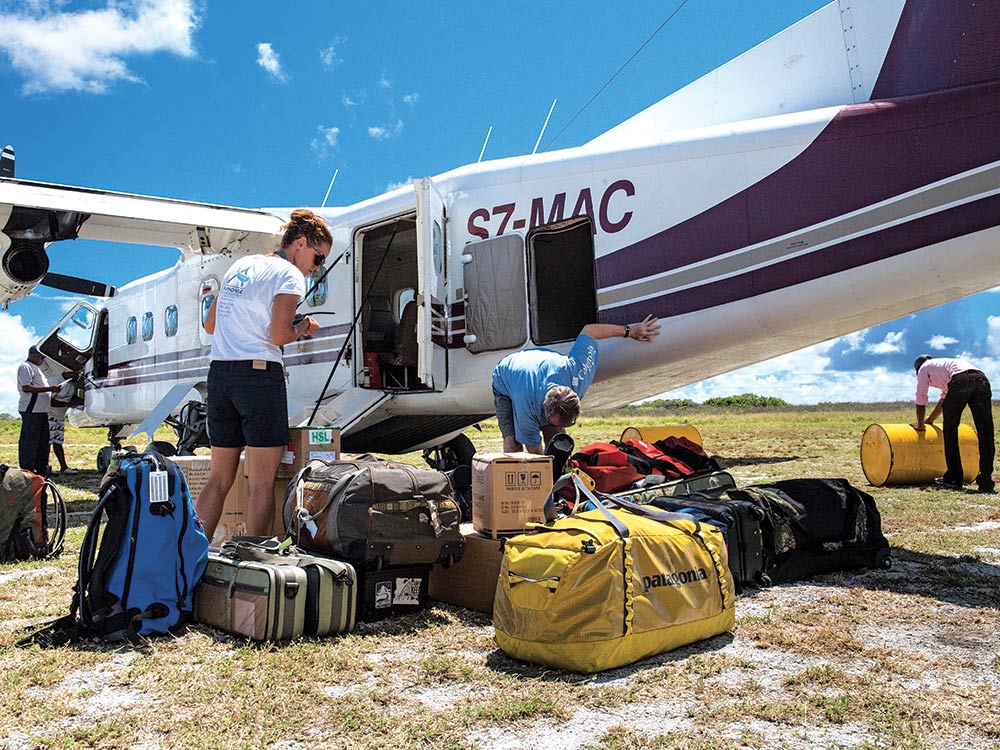
Tag Your Luggage for the Trip
TaMake sure every piece of checked luggage is well-marked and easy to identify. I use a lot of Simms and Patagonia soft-sided duffels made with heavy-duty, waterproof or water-resistant materials. I want my bags to be easily identified, which is why I write out my name and contact information on these bags with a giant Sharpie. A traditional luggage tag works until it is ripped off your luggage or broken. I also include a copy of my flight and travel itinerary inside each checked bag (on the top). More than once this has resulted in my luggage finding me quickly, even when jumping from place to place.
To pack well, plan ahead, and research the areas you’ll be visiting . Bring the right gear packed effectively, and upon arrival, you’ll be able to focus on the fishing and having fun instead of worrying about lost luggage, broken gear or unexpected bag problems.
Fast Facts for Success
What to Take : Make a pile, then cut it in half. How to Pack : Favor smaller bags over one huge one. Think Ahead : Match your luggage to your conveyance, such as boats or small planes.
Quick-and-Easy Travel Tips for Fishing
- Use a packing list. Update and edit your own gear list and adhere to it religiously.
- Pack photocopies of your itinerary, passport and phone numbers in multiple bags.
- If you are headed to the tropics, pack your rain jacket for quick access.
- Reel handles can break. Wrap them in clothes or put them in a padded case.
- Hand-write important contact numbers and bring them with you.
- Weigh checked luggage at home to be sure it’s under the limit and avoid additional fees.
- Wear slip-on shoes for easier clearance through airport security.
- Bring a fleece, even to warm climes. Mornings and evenings are often cool, and airplanes are notorious for being cold.
- Bring cash in small bills for tips and be sure that all bills are in new or mint condition.
- Roll your clothes when packing, never fold or bunch. Use clothes to protect fragile items.
- Rig as much tackle as possible (backing, lines, leaders, etc.) before you leave home. Be ready to fish as soon as you arrive at your destination.
- Take a lot of photos. Great photos are the ultimate souvenirs.
- Travel insurance is worth purchasing for big-ticket trips that are largely nonrefundable.
- Insect repellent goes on every trip, even the ones for which people say you won’t need it!
- Don’t be afraid. The world is not nearly as dangerous as the media makes it out to be. Use common sense and you’ll almost always be OK.
- Remember: If you’re not sure about packing something, you probably don’t need it.
- More: North America , Travel
- More Travel

Targeting Redfish in the Georgia Bight

Unusual Tuna Hotspots

Chasing Striped Bass Through New Jersey Marshes

Where to Find the Best Fishing in March

How to Sight-Fish for Cobia

The Importance of Grassroots Efforts to Recreational Fisheries Management

Spinning Fish Mystery Investigated

Finesse Fishing With Microlures

- Digital Edition
- Customer Service
- Privacy Policy
- Cruising World
- Sailing World
- Salt Water Sportsman
- Sport Fishing
- Wakeboarding
Fishing Trip Packing List
We started Captain Experiences to make it easy to book fishing and hunting guides around the world. With over 1,500 Damn Good Guides, our platform makes finding and booking a trip seamless. Head here to check out our trips.
Going Fishing
While most of our guides here at Captain Experiences will provide everything you need for a great day on the water, you might be curious to know what they’re bringing so you can be ready for your next solo adventure.
When you’re going fishing, one of the most important things you can do is to get prepared for a successful trip. Below is all the information you’ll need to get out on the water and have a Damn Good Trip.
Fishing Must Haves
It’s hard to have a bad time fishing, but it’s hard to fish at all without having the right angling supplies.
Our guide Chris says it best “We send a very detailed list to our adventurers. I can always tell who reads these and who doesn’t.”
To have the best experience, it’s important to be prepared, here is a list of everything you’ll need.
The Best Fishing Gear
To get started, you’ll need some basic fishing gear. Now of course this list will be different depending on whether you’re doing some fly fishing in the creek, or targeting wahoo in blue water.
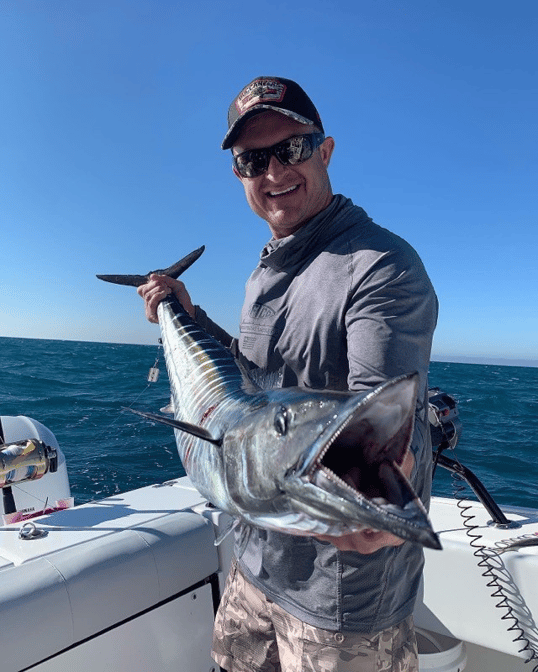
No matter what type of fishing you’re doing, or which species you’re hoping to land, this should give you a good idea on how to get started with some of the best fishing gear, along with some advice from our captains.
1. Fishing license and fishing regulations information: First thing’s first, need to make sure you’re legal. Be sure to check out your local regulations and purchase your fishing license. Nothing quite ends a fun fishing day like a bad experience with a game warden. If you don’t know where to start, we have you covered on access to licensing and regulation information by state here .
2. Rods and Reels: Unless you’re going old school and trying to catch some fish by hand, spear, or bow, you’ll need some rods and reels. Now what exactly you’ll need will vary on whether you’re fly fishing, freshwater fishing, or saltwater fishing. If you’re in the salt for example, you’ll have to decide the level of power and action you’ll need to handle, whether you want a spinning rod or baitcaster, if you’ll need a trolling rig, or a jigging rod and reel. Different species, skill levels, and spots will require different rods and reels.
If that all sounds like gibberish, our captains and guides have you covered. “The most important gear we bring is the actual rod and reels rigged up with the best tackle for the booked trip. The captain knowing what to rig up for each specific trip type makes a huge difference in the success for the day” - Captain Mike Short
3. Tackle Box: As Captain Mike said, you’ll need to bring some tackle. Every angler has their own mix of tackle that they rely on, but it’s a standard mix of hooks, sinkers, bobbers or floats, lures, a dehooker, swivels, extra fishing line, and leader material. Different species require different strengths, lengths, and weights of all of the above. The best way to figure out what you’ll need is to get help from a guide, but if you’re going solo be sure to research your target species and what is necessary to catch them.
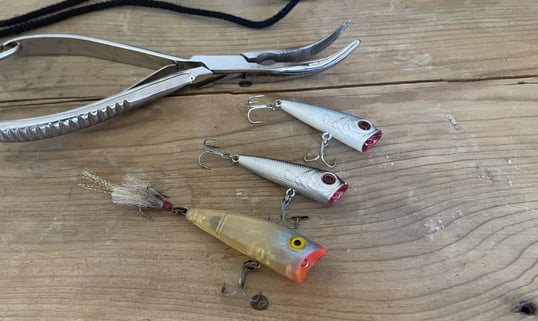
4. Lures or bait: Included in your tackle box or in your bait well, you need something to get the attention of the fish. Artificial lures include flies, spinners, plugs, spoons and more, all designed to attract them, usually by using movements, vibrations, or colors that replicate their prey. Bait can also be used in the same way. If you’re trying to choose between the two, or what the best of either is to use, it’s good to visit a local bait shop and see what bait they’re offering that’s in season, either to stock up or to find out which artificial option would best mimic them.
5. Pocket knife, pliers, and scissors: To complete your tackle box, you’ll need some tools. There will be lines to cut, lures to adjust, hooks to be sharpened or removed, or a hundred other things that may come up on your trip. Having some tools, or even a multi-tool, comes in handy.
6. Nets and gaffs: Whether you’re in a creek bed or far offshore, you’ll want to have some tools to land your catch both safely for you and the fish. When it comes to catching and releasing, nets are vital which you can read more about here . For those large, trophy fish in the deep, a gaff assists you to get some monsters in the boat.
7. Boat or waders: If you’d like to get off the shore or pier and want to stay dry, waders or a boat will help you. Waders are waterproof bibs or boots that keep you warm and dry while you traverse the waves. Boats are great to get out to areas that you just simply can’t reach from land. Use our guide to find out what would be the best boat for your trip here .
8. Sun protection: Hats, polarized sunglasses, and non-spray sunscreen are essential to enjoy your trip and be able to tell everyone about it the next day without wincing through a sunburn. Sunlight reflects off of the water, and it will sneak up on you when you’re too busy enjoying the action. Polarized sunglasses have an added bonus of being able to see through the water and spot fish for some sight casting.
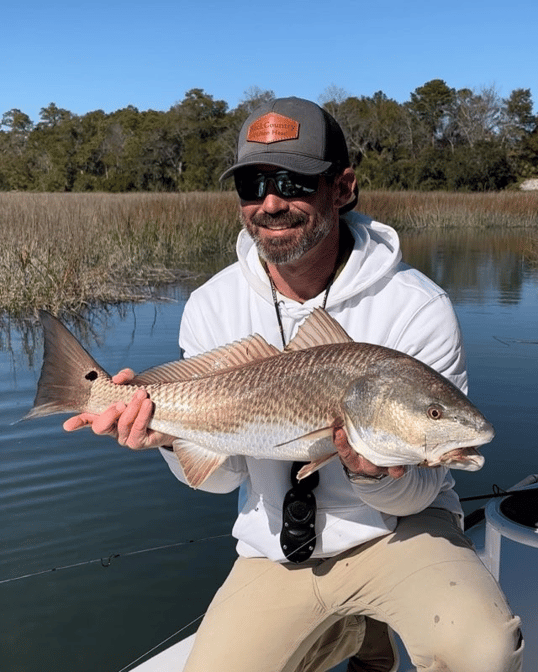
9. Personal flotation devices: If you’re leaving land, having personal flotation devices is extremely important. Not only are they often a legal requirement when you’re on the boat, but for your own safety having life jackets and other emergency equipment, such as a first aid kit, flares, and more can make a vital difference.
10. Cooler, filet knife, and baggies: If you’re choosing to keep your catch at the end of the trip, to cook for a delicious reward after a hard day’s work, you’ll need some tools. Depending on the type of fish, different tools will be helpful, but clean water and a knife are always needed to do the cleaning. Baggies that have a closable top along with a cooler and some ice will keep the fish fresh until you get home and can store them in the freezer. If you’re using a guide, they’ll be able to clean the fish for you, but be sure to keep at least an empty cooler in the car so you can stock up before you make your way home or to a local restaurant that cooks your catch.
Now that we’ve covered all the basics, it’s time to get into all of the fun extras. These are things that won't make or break your trip, but they’re must-haves to make it the best experience possible.
1. Tape measure or scale: Being able to measure and weigh your catch is absolutely necessary if you’re looking to keep your catch, as you need to make sure it is of legal size. However, if you’re just looking to catch and release, it helps to keep track of your personal best, and some accurate bragging rights. Though, when people tell fishing stories, a few inches or pounds are added for every re-telling.
2. Camera: These days, almost everyone has a high quality camera built into their phone, making it an easy thing to pack. Fishing is all about making memories, and having pictures of your day on the water is something to be treasured. Just like the tape measure, it’s also another opportunity to show off your catch to your buddies.
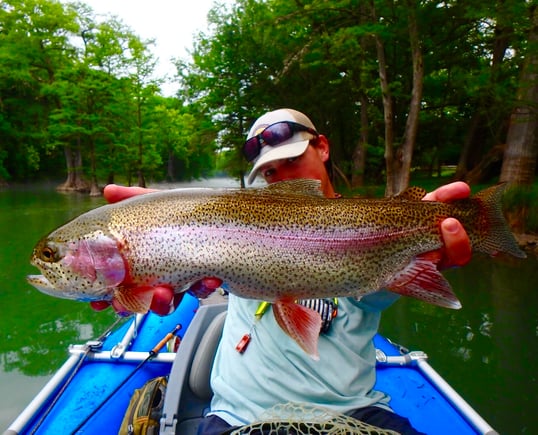
3. Snacks and drinks: When you’re on the water, staying hydrated is vital but often forgotten. Snacks are also important to keep you fueled for an action packed day. Granola bars, crackers, sandwiches, or whatever is your taste can make the difference of coming in early. Of course, a couple cold ones on the boat can add to the relaxation, just be sure not to bring any glass, and have a trash bag for your wrappers, bottles, and cans.
4. Bug Spray: Insects are a quick snack for fish, and you’re a quick snack for them. To avoid spending the entire trip debating on whether or not mosquitos are that important to the ecosystem, spend more time fishing and bring some bug spray.
5. Cash: If you’re going on a guided trip, bringing cash for a tip is customary. Learn more about how much to tip with our guide here . Even if you’re doing your own thing, having spare cash is always a good idea. A quick stop at a bait shop, the gas station, or restaurant on the way home might end up being on the agenda.
What to Wear Fishing
What to wear on a daytrip, what to wear on a fly fishing trip, and what to wear on an offshore trip all have different, but similar answers. What to wear deep sea fishing, especially if you’re planning a multi day trip, will be a little more intensive than simple daytrip clothing. What to wear fly fishing will also vary, not only due to the type of trip, but also depending on the weather. Below are our suggestions on how to be in fashion for any type of trip.
1. Always wear layers. Some of the best times to fish are in the early morning and late afternoon. Starting or ending with a jacket you can rip on and off in a flash is prime to say cozy during your trip. Ripping through the wind on the boat to your fishing spot can also get a little chilly. If you’re on the side of the lake, shedding off a long sleeve on your 20th cast should be able to be quick so you don’t miss the action. Preparation is key and having options is helpful while fighting fish.
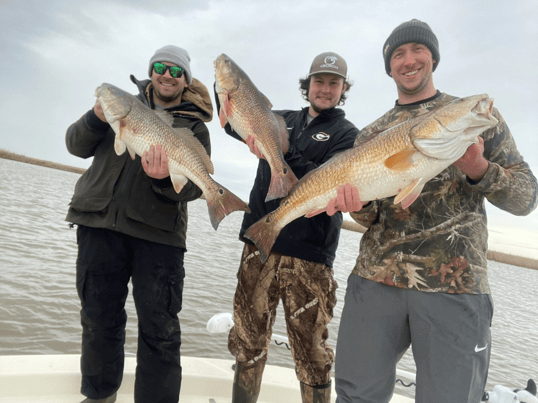
2. Non-marking shoes. Whether it’s your own boat, a buddy’s boat, or a guide’s boat, there’s nothing quite as painful as looking down and seeing a bunch of marks from your black soled shoes. When fighting fish, you’ll want something non-slip so you can have a solid plant, and non-marking so you can leave with awesome memories and zero guilt.
3. Extra set of clothes. If you’re going on a multi-day trip, this may be obvious. However, even on a daytrip, it’s nice to have a spare change of clothes to change into after the trip or even on the way back to shore. Chances are when you’re fishing, you’re probably going to get wet or get some seaweed slime on you. Being able to change into a warm, dry, and clean set of clothes can make all the difference for that after trip dinner spot while you talk about your epic day.
4. Staying comfortable. Fishing is both relaxing and exhilarating, but it certainly isn’t an easy hobby. Battling fish is a lot of effort, and being comfortable will save some aggravation. Along with layers, performance shirts and bottoms are perfect to keep your sweat wicked, dry quickly, and allow you to handle all the action. As Captain Bryce puts it “Making sure you are wearing the correct clothes for a day on the water is of utmost importance. Wearing the incorrect clothes can make a very enjoyable day on the water a very uncomfortable day”
5. Dress for the weather. You can find great fishing in almost any season and any weather if you have the drive. Cold, wind, and rain are all something to consider having to fare on the seas, so bringing a windbreaker or rain jacket is always a good idea. For a complete guide on what to wear on a fishing trip depending on the weather and season, check out our advice here .
Hitting the Water
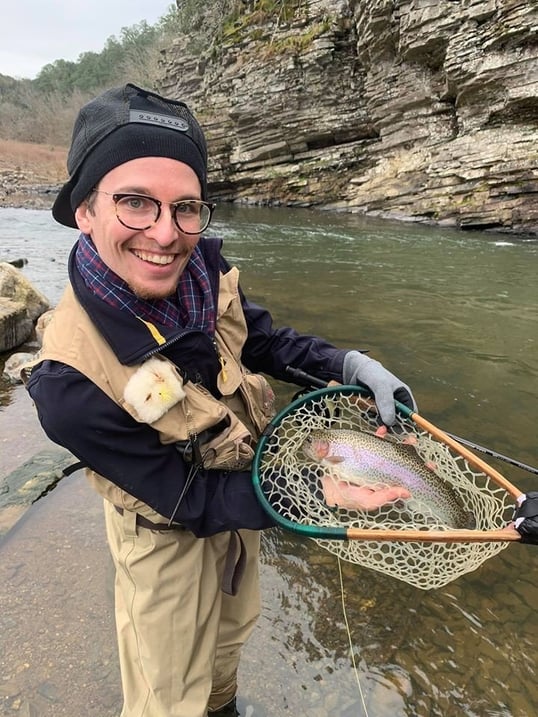
That’s a pretty long checklist, odds are you’ll probably forget to bring something. Not to worry though, as Captain Walter likes to say, the most important thing you can bring is confidence. Staying positive and having a good time is what it’s all about. Whether you’re going on a guided trip and only have to bring yourself, or you’re going on a multi-day solo kayaking adventure these are the necessities to get you started.
Shawna Stowers
Updated on August 2, 2023

February 18, 2021

January 19, 2021

June 22, 2022

October 26, 2020

March 8, 2022
Related Articles

May 10, 2020

January 25, 2022
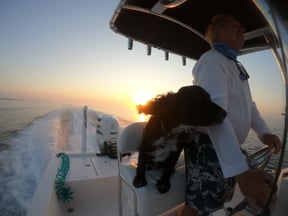
July 14, 2023

Fishing Charter Checklist: 15 Essential Things to Bring

Imagine sitting in the middle of a beautiful lake or ocean, fishing line in the water, waiting for that big fish to bite. It sounds like a wonderful trip! You probably spent a lot of money chartering this fishing trip, and you don’t want anything to go wrong.
Making sure you pack all the essential supplies can ensure you have the trip of a lifetime. Getting sunburned, not having enough water, or not bringing the right fishing gear can make being on a boat miserable. So how do you know what to bring on a charter fishing trip?
Don’t worry! We’ve made a fool-proof fishing charter checklist with everything you’ll need to bring to cover all the bases on your next fishing charter. Let’s take a look!
FISHING CHARTER CHECKLIST
1. fishing license.
Before your excursion, you’ll want to look into getting a fishing license. Some charters will cover this, but it’s important to check if you need one. Obtaining a fishing license is fairly simple, and in most states, you can take care of this online.
You definitely do not want to go on your trip without one, as you can end up with a hefty fine. Also, the money from your fishing license goes to wildlife protection and conservation!
If you haven’t been deep sea fishing, are wondering what to expect and if its worth the cost check out this article for some helpful insight.
2. Standard Fishing Gear
The full list of gear you need depends on what kind of trip you’ve chartered. Every trip will need the standard supplies, though, and that includes:
- Rod and Reel
- Tacklebox with extra lines, hooks, and sinkers
- Bait (or you can catch your own at the start of the trip)
If you’re wondering what to bring deep sea fishing, make sure you research the fish in the area you’ll be going to and get a rod and reel that can handle that type of fishing.
3. Snacks and Drinks
You’re probably going to be out on the water for a long period of time. This means sitting in the hot sun for hours. You want to be sure you bring plenty of water to keep you hydrated.
Snacks are always a good idea as well. Bring some high-protein snacks to keep you full and nourished throughout the day. Being hungry can really put a damper on your experience.
4. Coolers and Ice Packs
You’ve packed all the water you need! But now it’s sitting in the hot sun getting warmer and warmer. It’s always a good idea to bring a cooler to keep your food and drink nice and cold, especially on a hot day.
Be sure to fill your cooler with lots of ice or ice packs and keep it in the shade to keep it cooler for longer.
5. Protection from the Sun
A sunburn can ruin anyone’s trip. Not only does the sun burn your skin, but more serious conditions such as heat stroke and sun poisoning can happen as well.
To protect yourself from the sun, you’ll want to bring high SPF sunblock and a hat. The sun reflects off the water, which is where you’ll be staring once your line is cast out. Your eyes can actually burn just like your skin can. Invest in some nice polarized sunglasses to protect yourself.
6. Protection from Weather
We all want gorgeous weather during a vacation, but that doesn’t always happen. Storms or rain showers can quickly happen when you’re out at sea or on a lake. Even in hot weather, being wet and rainy on a boat can get chilly pretty fast.
Bring a rain jacket or poncho to protect yourself from getting drenched. An extra pair of long sleeves to throw on under your jacket is always a good idea.
7. Proper Fishing Apparel
If you get lucky and you do have beautiful weather, you’ll also want to be sure you’re wearing the proper attire for a fishing trip. A light, long-sleeved shirt or T-shirt can protect you from overheating in the sun. Shorts and a nice hat can also keep you comfortable.
A bathing suit seems obvious, but you’ll be surprised how many people don’t think of it! Taking a dip after a long day fishing in the sun is a must.
8. Insect Repellent
You might think there are no bugs out on the ocean, but they will definitely follow you there. Packing an efficient insect repellent can save you from future itching and scratching.
9. Waterproof Storage
Spending the day on a boat means you’re bound to get wet, and so will your supplies. If you have items with you that need to stay dry, you’ll want to bring some waterproof storage. There are tons of waterproof bags out there that can easily solve this dilemma.
10. Personal Care Items
Make sure you bring any personal care items you’ll need throughout the day. Be sure you bring any medication you need so you won’t have to take an emergency trip back to shore. If you get sea-sick easily, bring something that works for you to ease the discomfort.
11. First Aid Kit
Accidents happen all the time. Having a first aid kit allows you to quickly take care of any mishaps like cuts, scrapes, and bug bites.
12. Towels and Wipes
As I mentioned earlier, you’re going to get wet! Whether that’s because you’re jumping in the water or simply getting splashed on the way to your spot, you’ll want to be able to dry off with a towel. Sanitary wipes are also a great idea. Touching bait and fish all day can start to feel pretty yucky.
13. Tool Kit
A tool kit can come in handy when making quick fixes to your gear. A small knife, scissors, and pliers or tweezers are great tools to have on hand when fishing.
14. Flashlights and Headlamps
If you are doing a night charter or a full day charter that continues after dark, you’ll definitely want to bring flashlights and headlamps. Yes, your boat will most likely have lights, but for small tasks like fixing gear or baiting hooks, the extra flashlight can make a big difference.
Last but not least, you want to bring a high-quality camera to document your trip. You can even invest in a waterproof camera to make sure you catch every moment, wet or dry.
You want to get the most out of your fishing excursion. Don’t be that person who has to borrow extra supplies from other people on your trip and doesn’t know what to bring on a charter fishing trip. The more prepared you are, the more space you have for fun and adventure! Double-check your list before you go and enjoy your experience!
Aaron Warner
Aaron Warner is an avid angler with over 15 years of experience. He has participated and won fishing tournaments all over the country and enjoys fishing for bass, trout, walleye and other species.
Recent Posts
Fishing Leader Length [Complete Guide]
Fishing leaders play a critical role in the sport of fishing. Whether you are a seasoned angler or just starting out, understanding the importance of fishing leaders can greatly improve your success...
How Often Should You Change Fishing Line?
If you are like most anglers you probably have a fishing reel that has had the same line on it for a few years now. You might be asking yourself is it time to change the line and how long does...

What to Bring in Deep Sea Fishing

By Alex Henderson
July 4, 2023

Are you planning your first deep-sea fishing trip? It can be quite an exciting experience! There are so many different things to consider when getting ready for this type of adventure, including what gear and supplies to bring. After all, being prepared is essential for a successful deep-sea fishing excursion. Here are some tips on what to bring with you on your next deep-sea fishing tour, from the necessary essentials to helpful extras that will make sure you’re comfortable and able to focus on reeling in the biggest hauls possible.
Sunscreen – Make sure to bring enough sunscreen to protect your skin from the sun’s UV rays
Sunscreen is absolutely essential for any deep-sea fishing trip, regardless of the time of year. The sun’s rays can be especially harsh and damaging when reflecting off of the open water. It’s important to apply a generous amount of broad-spectrum sunscreen with an SPF rating of at least 30 before and throughout your excursion. While higher SPF ratings offer better protection, it is also important to reapply more sunscreen after swimming, sweating, or toweling off. Sunburns can quickly become painful and can even increase your risk for skin cancer over time. Additionally, wearing a wide-brimmed hat and long sleeves made from sun-protective fabric can help keep you safe from the sun.
Layers – You’ll want to have a few layers of clothing, depending on the weather conditions
Layers are important to bring when deep sea fishing , as the weather conditions can vary greatly. It is important to have a variety of clothing to ensure that you stay warm and comfortable throughout your excursion. Depending on the time of year, temperatures can range from mild to quite cold, so it is best to be prepared for any kind of weather. If you’re going during the summer months, lightweight fabrics like cotton or linen are ideal for keeping cool while still providing a layer of protection against wind and sun exposure. In the winter months, however, heavier fabrics such as wool or fleece should be worn in order to provide more insulation against the colder temperatures. Additionally, having items like beanies or waterproof jackets with hoods can help keep you even warmer and dry during your outing.
Life vest – Bringing along a life vest, even if you don’t plan on swimming, is definitely recommended
It is highly recommended to bring along a life vest when going on a deep-sea fishing trip, even if you don’t plan on swimming. Life vests provide an extra layer of protection in the event that an emergency arises while out on the water. Additionally, wearing a life vest can help keep you afloat should you find yourself in rough waters or fall overboard. It is important to make sure the life vest fits properly and that it is certified by the U.S. Coast Guard or other safety organizations. Furthermore, it is wise to choose a style with reflective patches and bright colors so that other boats can easily spot you in case of an emergency. It is also recommended to pack additional items, such as whistles and signaling devices, that can be used to signal for help if needed. Additionally, be sure to familiarize yourself with any local regulations regarding life vests before heading out on your excursion. Taking these simple steps will ensure your safety while deep-sea fishing and allow you to focus on catching some big hauls without having to worry about your personal safety!
First aid kit – In case of any minor injuries, be sure to bring a first aid kit stocked with bandages and antiseptic
First aid kits are a must-have for any deep-sea fishing adventure. They provide you with the necessary tools to quickly and safely treat any minor injuries that may occur during your trip. When packing a first aid kit, make sure to include items such as bandages, antiseptic cream, gauze, adhesive tape, burn ointment, tweezers, thermometers, antihistamines, anti-allergen medicines, and aspirin. It is also wise to include other over-the-counter medicines such as ibuprofen or cold and flu remedies in case of illness. Additionally, be sure to include other helpful items like a flashlight or headlamp with extra batteries (in case of darkness) and insect repellent if needed. Having these items on hand will ensure you’re prepared for any situation that may arise during your outing. Furthermore, it is important to properly store these supplies in an easy-to-reach area so that they’re always accessible when needed.
Flashlight – For visibility in dark waters or when fishing at night
When it comes to fishing, the fun doesn’t necessarily end when the sun goes down. In fact, some of the best catches can happen at night. But in order to navigate the dark waters and make sure you’re staying safe , a reliable flashlight is a must-have. It’s not just about being able to see where you’re going – having a quality flashlight can also help you spot fish , bait your hook, and avoid any potential hazards lurking beneath the surface. Plus, there’s just something about the thrill of shining a light into the depths and discovering what lies below. So whether you’re an experienced fisherman or a newbie trying to up your game, don’t forget to pack a trustworthy flashlight for your next night’s fishing adventure.
Fishing rod and tacklebox– If you don’t plan on renting equipment, make sure you bring your own
When it comes to deep-sea fishing, having your own rod and tackle box is essential. Not only will this save you money in the long run, but it will also ensure that you have quality equipment for your excursion. There are a few key pieces of gear to consider when purchasing a deep-sea fishing rod and tackle box. Firstly, look for a strong, durable rod that can withstand the wear and tear of being out on the open water. Also, be sure to select a reel that is appropriate for the type of fish you plan on catching – spinning reels are great for smaller catches, while baitcasting reels are better suited for larger species like tuna or marlin. Lastly, make sure to select the right kind of line for your needs – a monofilament line is great for general-purpose use, while braided lines work best for heavier lures and bigger catches.
When buying a tackle box, keep in mind that size matters – you don’t want one too small as it won’t fit all your supplies, nor do you want one too big as it may take up unnecessary space on board your vessel. Additionally, having adjustable compartments can be helpful in organizing different sizes and types of lures and lines so they’re easily accessible when needed. Furthermore, make sure to invest in quality materials with waterproofing features such as rubber seals or gasket closures- this way, your supplies won’t get damaged by saltwater or moisture build-up when stored away at the bottom of the boat. Having all this gear on hand will ensure that you’re prepared to make the most out of any opportunity for big hauls during your outing!
No matter what type of deep-sea fishing trip you’re planning, it is important to be prepared. From the necessary essentials like sunscreen and a life vest to helpful extras such as layers and first aid kits, having these items on hand will ensure your safety while out at sea. Additionally, don’t forget about bringing along some quality gear for catching fish – this includes rods, tackle boxes, lines, and lures that are appropriate for the species you plan on targeting. Finally, make sure to bring a reliable flashlight or headlamp with extra batteries so that you can navigate dark waters safely during night fishing trips. With all these supplies in tow, you’ll have everything needed for an enjoyable day of deep-sea fishing !
Frequently Asked Questions
Q: what kind of sunscreen should i bring on a deep-sea fishing trip.
A: It is important to pack sunscreen with an SPF of at least 30, which will shield your skin from the sun’s harmful ultraviolet (UV) rays and provide protection against skin damage, premature aging, and even skin cancer. Make sure to apply it often throughout the day for maximum protection.
Q: What other supplies should I bring on a deep-sea fishing trip?
A: In addition to sunscreen and layers of clothing , it is also important to bring a life vest, even if you don’t plan on swimming, as well as a first aid kit in case of any minor injuries. A flashlight is also essential for visibility in dark waters or when fishing at night, and don’t forget your fishing rod and tacklebox if you don’t plan on renting equipment. With these items, you will be well-prepared for a safe and successful deep-sea fishing trip.
Q: What type of clothing is recommended for a deep-sea fishing trip?
A: When it comes to dressing for the outdoors, layers are key. Depending on the weather conditions , you’ll want to have a few layers of clothing to help regulate your body temperature and stay comfortable. A base layer made of moisture-wicking material can help keep sweat off your skin, while a mid-layer of fleece or wool offers warmth and insulation. An outer layer that’s waterproof and windproof will help you stay dry and protected in wet or windy conditions.
You might also like
Exploring the History of Angling: A Look at Why Fishing is Called What It Is
Choosing the right reel size for successful surf fishing, how far to cast when surf fishing for pompano, fishing lingo 101: explaining pb in fishing.
Essential Items To Pack For A Memorable Deep Sea Fishing Trip
- Last updated Jan 05, 2024
- Difficulty Beginner
- Category United States
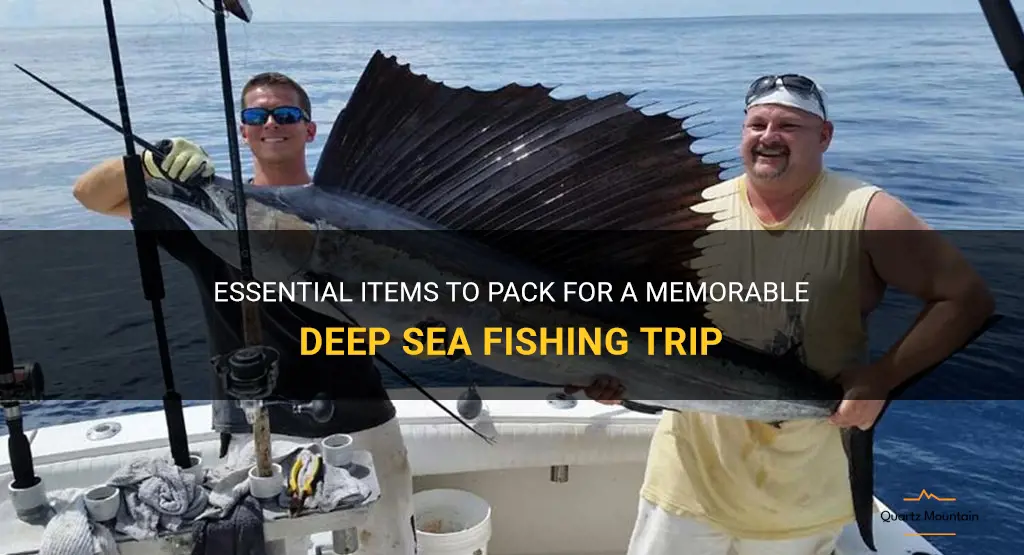
Are you planning an unforgettable deep sea fishing trip? Whether you're a seasoned angler or a beginner, packing the right essentials is crucial to ensure a successful and memorable experience. From high-quality fishing gear to protective clothing, we've compiled a list of must-have items that will make your deep sea fishing adventure one for the books. So, grab your sunscreen and get ready to catch some big fish as we dive into the essential items you need to pack for a memorable deep sea fishing trip.
What You'll Learn
What are the essential items to pack for a deep sea fishing trip, are there any specific clothing items or gear that are recommended for deep sea fishing, what types of food and drinks should be packed for a deep sea fishing trip, are there any safety items or equipment that should be included in the packing list for deep sea fishing, are there any specific items that should be packed for different types of fish that may be caught during deep sea fishing.

Deep sea fishing can be an exciting and thrilling experience for both beginners and experienced anglers. Whether you are planning a day trip or a week-long adventure, it is important to pack the necessary items to ensure a successful and enjoyable fishing trip. Here are some essential items that you should consider packing for your deep sea fishing excursion.
- Fishing Rod and Reel: This is the most obvious item that you will need for deep sea fishing. Make sure to choose a rod and reel that are suitable for offshore fishing. Look for a sturdy and durable rod that can handle the weight and fight of larger fish species found in deep waters.
- Tackle and Lures: Pack a variety of tackle and lures to increase your chances of catching different types of fish. Consider bringing a selection of jigs, spoons, and trolling lures in various sizes and colors. It's also a good idea to bring extra fishing line, hooks, and sinkers in case any of your equipment gets damaged or lost.
- Fishing Line: Use a strong and durable fishing line that is specifically designed for saltwater fishing. Choose a line that has a higher pound test rating to withstand the pulling force of larger fish. It's a good idea to bring extra spools of line in case you need to re-spool your reel during the trip.
- Safety Equipment: Safety should always be a top priority when engaging in any outdoor activity, and deep sea fishing is no exception. Pack essential safety equipment such as life jackets, a first aid kit, and a throwable floatation device. It's also a good idea to bring a waterproof or floating phone case in case of emergencies.
- Sun Protection: Spending long hours on a boat under the sun can take a toll on your skin and eyes. Pack sunscreen with a high SPF and apply it liberally throughout the day. Don't forget to also bring a wide-brimmed hat, polarized sunglasses, and a lightweight, long-sleeved shirt to protect yourself from harmful UV rays.
- Food and Water: Deep sea fishing trips can be physically demanding, so it's important to stay hydrated and nourished. Pack plenty of water and snacks to keep your energy levels up throughout the day. It's also a good idea to bring a small cooler with ice packs to keep any perishable food items fresh.
- Wet Weather Gear: Even if the weather forecast predicts clear skies, it's always a good idea to be prepared for unexpected rain showers. Pack a lightweight waterproof jacket and pants to keep you dry during wet weather conditions. A waterproof backpack or dry bag is also handy for keeping your belongings safe and dry.
- Navigation Tools: While most deep sea fishing charters will provide navigation tools, it's always a good idea to have a backup plan. Pack a compass or GPS device to help you navigate and locate fishing spots. It's also a good idea to bring a waterproof chart or map of the area you'll be fishing in.
- Camera or GoPro: Deep sea fishing trips often provide breathtaking views and the opportunity to see and catch unique fish species. Don't forget to pack a camera or GoPro to capture these special moments and create lasting memories.
By packing these essential items, you will be well-prepared for a fun and successful deep sea fishing trip. Remember to check and comply with any specific regulations or requirements for the area you plan to fish in. Lastly, don't forget to have fun and enjoy the experience of fishing in the deep sea!
Essential Items to Pack for a Long Delta Flight
You may want to see also
Deep sea fishing is a popular recreational activity enjoyed by many fishing enthusiasts. It offers the thrill of venturing out into the open ocean in search of big game fish such as marlin, tuna, and swordfish. However, deep sea fishing also presents its own set of challenges and dangers, which is why it's essential to come prepared with the right clothing and gear.
When it comes to dressing for deep sea fishing, there are a few key factors to consider, such as sun protection, comfort, and the unpredictable nature of the ocean. Here are some clothing items and gear that are recommended for deep sea fishing:
- Sun protection clothing: Spending long hours under the scorching sun can be detrimental to your skin. It's crucial to protect yourself from harmful UV rays. Wearing lightweight, long-sleeved shirts and pants made from UPF (Ultraviolet Protection Factor) fabric can shield your skin from the sun's rays. A wide-brimmed hat and sunglasses with UV protection are also essential to protect your face and eyes.
- Non-slip footwear: The deck of a fishing boat can be slippery, especially when wet. To ensure your safety, it's important to wear non-slip footwear. Deck shoes or rubber-soled shoes are ideal as they provide good traction and prevent accidents.
- Waterproof and windproof jacket: The weather at sea can change in an instant, and it's essential to be prepared for rain, wind, and sudden temperature drops. A waterproof and windproof jacket will keep you dry and warm in case of adverse weather conditions.
- Layered clothing: Dressing in layers is crucial for deep sea fishing as the temperature can vary significantly throughout the day. Wearing a moisture-wicking base layer, a lightweight fleece or sweater, and a waterproof outer layer will allow you to regulate your body temperature accordingly.
- Fishing gloves: Handling fish and fishing gear can be challenging and rough on your hands. Fishing gloves provide protection and improve grip, making it easier to handle fish and tackle without injuring yourself.
- Life jacket: Safety should always be a priority when going out to sea. Wearing a properly fitted life jacket is essential, especially when venturing further offshore. In case of an accident or emergency, a life jacket can save your life.
- Polarized sunglasses: Polarized sunglasses are a must-have for deep sea fishing. They help reduce glare from the water's surface, allowing you to see more clearly and spot fish or underwater structures. They also protect your eyes from harmful UV rays.
In addition to the clothing items mentioned above, don't forget to bring a hat, sunscreen with a high SPF, a waterproof bag to protect your belongings, and a first aid kit for any minor injuries.
While it's important to dress appropriately for deep sea fishing, it's equally crucial to follow safety guidelines and listen to the captain or crew's instructions. They have the necessary experience and knowledge to ensure your safety and make your fishing trip a success.
In conclusion, choosing the right clothing and gear for deep sea fishing is essential to ensure your comfort, safety, and enjoyment. Sun protection clothing, non-slip footwear, a waterproof jacket, layered clothing, fishing gloves, a life jacket, and polarized sunglasses are all recommended items for a successful and safe deep sea fishing experience. Remember to plan accordingly, pack smartly, and always prioritize safety on your fishing adventure.
Essential Packing Tips for Traveling to Austria in June
Deep sea fishing trips can be long and physically demanding, so it's important to pack the right kinds of food and drinks to keep your energy levels up and maintain hydration. Here are some recommendations for what to pack for your next deep sea fishing adventure.
- Water: Staying hydrated is crucial when spending long hours in the sun and engaging in strenuous activity. Pack plenty of water, at least one liter per person per hour. It's a good idea to freeze some water bottles beforehand, as they can double as ice packs to keep other perishable items cool.
- Sports Drinks: In addition to water, bringing sports drinks can help replenish electrolytes lost through sweating. Look for drinks that contain sodium, potassium, and carbohydrates to provide you with the necessary nutrients for prolonged physical activity.
- Snacks and Energy Bars: Bring a variety of snacks to keep you fueled throughout the day. Granola bars, trail mix, and beef jerky are all great options as they provide a good balance of protein, healthy fats, and carbohydrates. Avoid sugary snacks that can cause energy crashes.
- Fresh Fruits and Vegetables: Packing fresh fruits and vegetables is important for maintaining a balanced diet and getting essential vitamins and minerals. Apples, oranges, carrots, and celery are all durable options that can withstand the journey and provide necessary nutrients.
- Sandwiches and Wraps: Prepare sandwiches or wraps with lean protein, such as turkey or grilled chicken, to refuel during breaks. Avoid mayonnaise-based spreads that can spoil easily. Opt for condiments like mustard or hummus for added flavor and nutrients.
- Canned Tuna or Salmon: Canned fish is an excellent source of protein and omega-3 fatty acids. Tuna and salmon can be easily packed and consumed on the go. Make sure to bring some whole wheat crackers or bread to accompany the fish.
- Bottled Drinks: Pack some bottled drinks such as iced tea, coffee, or soda if you prefer these beverages. However, it is important to note that sugary drinks can dehydrate you if consumed excessively. Stick to water and sports drinks as your primary sources of hydration.
- Ice Cooler: Investing in a good-quality cooler is essential to keep perishable items fresh and prevent food spoilage. Fill it with ice packs or frozen water bottles to maintain the ideal temperature.
Remember to pack enough food and drinks for the entire duration of your deep sea fishing trip, as there may not be convenience stores or restaurants nearby for restocking. It's also important to adhere to any dietary restrictions or allergies in your group.
By packing a variety of nutritious and energizing foods, you can ensure that you have the fuel needed to stay focused, energized, and hydrated during your deep sea fishing adventure. So, grab your fishing gear and a well-packed cooler, and get ready for a day of thrilling catches on the open water!
Essential Items to Pack for a Volleyball Game: A Comprehensive Guide
When going on a deep sea fishing trip, it is important to ensure that you have all the necessary safety items and equipment. Deep sea fishing can be an exciting and enjoyable experience, but it also comes with its own set of risks and challenges. By being prepared and having the right gear, you can ensure a safe and successful fishing trip.
One of the most important safety items to include in your packing list is a life jacket. Even if you are a strong swimmer, wearing a life jacket is crucial in case of an emergency or if you fall overboard. Make sure to choose a life jacket that is approved by the U.S. Coast Guard and fits you properly.
Another essential safety item is a first aid kit. Accidents can happen while fishing, such as minor cuts, scratches, or even hook injuries. Having a well-stocked first aid kit with band-aids, antiseptic, gauze, and other medical supplies can help you treat any injuries quickly and effectively.
In addition to a life jacket and first aid kit, it is also important to have a proper communication device on board. This can be a marine VHF radio or a satellite phone. These devices allow you to contact the coast guard or other vessels in case of an emergency. Make sure to familiarize yourself with how to use the communication device before setting out to sea.
Another safety item to include in your packing list is a personal locator beacon (PLB) or an emergency position indicating radio beacon (EPIRB). These devices can be activated to send out a distress signal with your location to rescue authorities. They are especially useful if you are fishing in remote or isolated areas where it may take longer for help to arrive.
In terms of equipment, it is important to have a sturdy and reliable fishing rod and reel. Deep sea fishing often involves catching larger and more powerful fish, so make sure your equipment is up to the task. It is also important to have a sharp and high-quality fishing knife for cutting bait, removing hooks, and other tasks.
A fishing tackle box is another essential item for deep sea fishing. It should be stocked with a variety of hooks, sinkers, swivels, lures, and other fishing accessories. It is also a good idea to bring extra fishing line and leader material in case they get damaged or tangled.
Lastly, it is important to have proper sun protection while deep sea fishing. This includes sunscreen with a high SPF, a hat, sunglasses, and protective clothing. The sun can be intense out at sea, and prolonged exposure can lead to sunburn and other skin damage.
In conclusion, when packing for a deep sea fishing trip, it is important to include the necessary safety items and equipment. This includes a life jacket, first aid kit, communication device, personal locator beacon or EPIRB, as well as a reliable fishing rod and reel, fishing tackle box, and sun protection. By being prepared and having the right gear, you can ensure a safe and enjoyable deep sea fishing experience.
What Can You Pack When Shipping to Alaska in the Air Force?
Deep sea fishing is an exhilarating and challenging sport that requires proper preparation and specialized equipment. When it comes to packing for a deep sea fishing trip, it is important to consider the specific items that may be needed for different types of fish that can be caught in these deep waters.
One of the most important factors to consider is the type of fishing gear that will be used. Different techniques, such as trolling, bottom fishing, or jigging, require different types of rods, reels, and lures. It's a good idea to research the specific fishing methods that are commonly used for the types of fish you are targeting and make sure you have the appropriate gear for each technique.
In addition to the fishing gear, there are a few other items that can enhance your chances of success and make your deep sea fishing experience more enjoyable. Here are some examples:
- Bait: Depending on the type of fish you are targeting, it is important to have the appropriate bait. Some fish species may prefer live bait, such as squid, shrimp, or small fish, while others may be attracted to artificial lures. Research the preferences of the fish you are targeting and be sure to pack the appropriate bait or lures.
- Tackle: In addition to the fishing gear, it is important to have a variety of tackle items, such as hooks, sinkers, leaders, and swivels. These items can be used to customize your fishing rig and increase your chances of success. It is also a good idea to have extra tackle items in case you lose or damage any during your fishing trip.
- Safety equipment: Deep sea fishing can be unpredictable, so it's important to have the proper safety equipment on board. This may include life jackets, flares, a first aid kit, and a radio or satellite phone for emergency communication. It's always better to be safe than sorry, so make sure you have all the necessary safety equipment before embarking on your deep sea fishing adventure.
- Food and beverages: Deep sea fishing trips can last several hours or even a whole day, so it's important to pack enough food and beverages to keep you energized and hydrated. Pack snacks, sandwiches, fruits, and plenty of water. It's also a good idea to pack a cooler with ice to keep your food and drinks fresh.
- Sun protection: Spending hours out on the open sea can expose you to the sun's harmful rays. It's important to pack sun protection items such as sunscreen, sunglasses, a hat, and lightweight, long-sleeved clothing. Protecting yourself from the sun can prevent sunburns, dehydration, and other harmful effects of prolonged sun exposure.
- Fishing licenses and permits: Before heading out on a deep sea fishing trip, make sure you have the necessary licenses and permits. Different regions may have different regulations and requirements for fishing, so it's important to do your research and obtain the proper documentation before your trip.
Overall, the specific items you should pack for deep sea fishing will depend on the types of fish you are targeting and the fishing techniques you plan to use. Researching the specific requirements and preferences of the fish you are targeting can help ensure you have all the necessary equipment and increase your chances of a successful fishing trip. Additionally, always be prepared with safety equipment, food and beverages, and sun protection to make your deep sea fishing experience enjoyable and safe.
Essential Items to Pack for a Winter Trip to Europe
Frequently asked questions.
When packing for a deep sea fishing trip, it's important to come prepared with the right gear and supplies. Here are some items to consider packing:
- Fishing rods and reels: Bring a variety of different rods and reels to accommodate different types of fishing and target species. It's always best to have a backup in case something breaks or malfunctions.
- Tackle box: Fill your tackle box with a selection of hooks, sinkers, lures, and other fishing accessories. Make sure to include a variety of sizes and types to adapt to different fishing conditions.
- Life jacket: Safety should be a top priority on any boating excursion, so be sure to pack a properly fitting life jacket for each member of your group. It's always better to be safe than sorry.
- Food and drinks: Deep sea fishing trips can last for several hours or even a full day, so be sure to pack enough snacks, sandwiches, and beverages to keep everyone fueled and hydrated throughout the trip.
In most cases, the charter or boat you're fishing with will provide fresh bait for the trip. However, it doesn't hurt to bring some backup bait, just in case. You can bring your own frozen bait or purchase it from a local bait and tackle shop before your trip. It's always a good idea to check with the charter or boat beforehand to see what they provide and if they have any specific recommendations.
Yes, there are a few additional items you may want to consider packing for added comfort during your deep sea fishing excursion. These include:
- Sunscreen: Protect your skin from the sun's harmful rays by packing and regularly applying sunscreen with a high SPF. Don't forget to reapply throughout the day, especially if you're sweating or getting wet.
- Hat and sunglasses: A wide-brimmed hat and polarized sunglasses can help shield your eyes and face from the sun while providing better visibility on the water.
- Extra clothing layers: Even if the weather is warm, it's always a good idea to bring some extra layers in case the temperature drops or you encounter unexpected rain. A lightweight jacket or windbreaker can help keep you comfortable.
- Motion sickness medication: If you're prone to seasickness, consider bringing along some over-the-counter or prescription motion sickness medication to prevent any discomfort during the trip.
Most deep sea fishing charters and boats will provide coolers or ice chests for storing your catch, drinks, and snacks. However, it's always a good idea to check with the charter beforehand to confirm if they have enough storage space or if they allow guests to bring their own coolers. If you're planning to bring your own cooler, make sure it's compact and easy to transport, as space may be limited on board.

- Paolo Barresi Author

- Merve Nussman Author Reviewer Traveller
It is awesome. Thank you for your feedback!
We are sorry. Plesae let us know what went wrong?
We will update our content. Thank you for your feedback!
Leave a comment
United states photos, related posts.

12 Delightful Things to Do in Viroqua WI
- Jun 18, 2023

Essential Gear for a Kokoda Trek: What to Pack for the Adventure
- Jan 13, 2024

Essential Packing Guide for a Ski Trip to Colorado
- Nov 18, 2023

Essential Items to Pack for a Memorable Trip to Kauai
- Mar 03, 2024

The Travel Restrictions Imposed by Clinton on Iran: A Closer Look
- Aug 23, 2023

The Ultimate Guide to Packing for a September Trip to Disney World
- Nov 17, 2023

Login to my account
Enter your e-mail and password:
New customer? Create your account
Lost password? Recover password
Recover password
Enter your email:
Remembered your password? Back to login
Create my account
Please fill in the information below:
Already have an account? Login here
Your cart is empty
Beginners Checklist for Deep Sea Fishing

- Cash for cleaning fish, food, and other things on the boat. Try to bring smaller bills for tipping.
- Rod, Reel, and Line (You can always rent or bring your own)
- Your favorite snacks.
- Sunblock (You will need this since you will be out on the open seas)
- Sunglasses
- Towels or small heavy-duty tissues.
- Camera (Though DSLRs are great, a quality point and shoot or GoPro will be most convenient)
- Seasickness medication. You want to get a good night sleep prior and no heavy food for breakfast to help reduce your sea sickness.
- Water. Though you are not moving much it is always good to stay hydrated.
- Ice Chest with Ice (to bring your fish back fresh)
This list should cover most of your needs and wants on a fishing trip. Go out there and catch some fish. We are confident you will enjoy your time and will want to pursue this awesome lifestyle.
Leave a comment
All comments are moderated before being published
A short sentence describing what someone will receive by subscribing
100% free, Unsubscribe any time!
Subscribe to our newsletter
We send product updates, Fishing Tips, and exclusive deals.
Unsubscribe at any time.
Free delivery
No cost on delivery in the continental U.S.A. on all products
3 Year Warranty
All Coastal Products come with a full 3 year warranty
Product Support
Speak to our seasoned support crew members
Secure payments
Payment information is protected by a secure gateway
- Opens in a new window.
Enjoy The Wild
Outdoor activities/ Adventure/ Survival/ Travel Blog
Fishing Trip Packing List: What To Bring on a Fishing Trip
Last Updated on 08/23/2022 by Brian John
Are you packing for your next big fishing trip ? Go through this fishing trip packing list to make sure you don’t forget anything important! Whether you’re a beginner to fishing or an old pro, everyone forgets something they need sometimes. Stay on top of your packing game and be prepared as possible when you get out on the water.

What To Pack for a Fishing Trip
Make sure you have this essential fishing gear packed for your fishing trip. Depending on where you’re going fishing and what type of fishing you plan to do, you may need more than this, but these are the basics:
Fishing License
Fishing rod, reel, and line, fishing hat, sunglasses, and sunscreen, first aid kit, fishing cart, caddy, or backpack, other tools.
Most states require you to have a fishing license to legally catch fish. Each state, and often each body of water, also has different regulations about where you can fish, what you can catch, and catch-and-release guidelines. Check out your state fishing laws and research your specific fishing location to ensure that you follow all laws and local regulations.
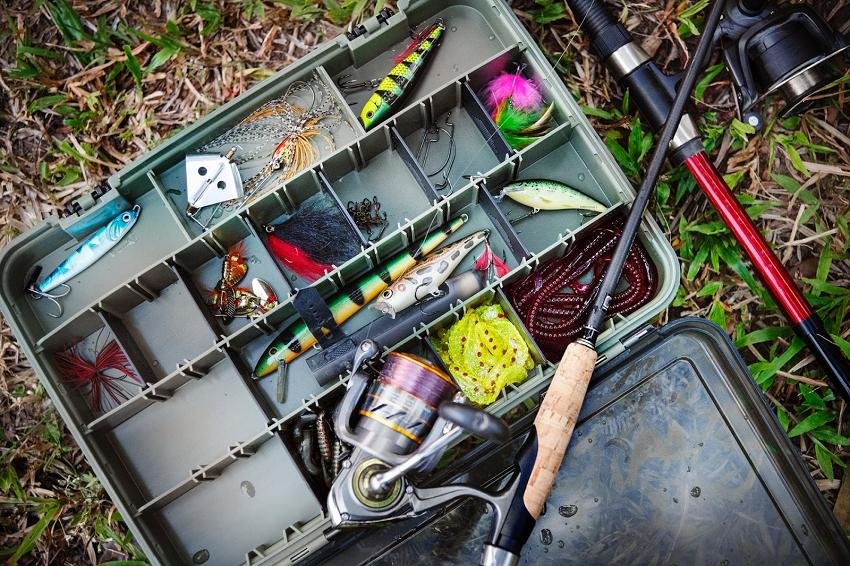
You can’t catch fish without a fishing rod, reel, and fishing line! These are the most basic staples you’ll need to go fishing. Fishing rods come in various sizes and have different features that may affect your choice - research the best rods for your style of fishing before you make a purchase.
There are also different types of reels to choose from. The most popular and easy to use fishing reel is a spinning reel, but more experienced anglers often choose a baitcasting reel, or a fly reel for fly fishing.
Fishing line is essential to use your rod and reel and to catch fish. There are three main kinds: monofilament, braided, and fluorocarbon. Your choice of line depends on your rod and reel, where you’re fishing, and what you plan to catch. You’ll also need extra, special line called leaders that you tie to the end of the line and attach tackle to.
You can’t forget to pack tackle if you plan to catch anything. Tackle is the equipment that is attached to the end of your line. The basic tackle you should have on your checklist includes bait, lures, hooks, swivels, bobbers, and weights. Your choice of live bait or artificial lures will depend on where you’re fishing and what you hope to catch. Research beforehand, or ask for help at the local tackle shop the day of.

Now that the weather has warmed up and the sun is out, fishermen need to be careful about the harmful effects of the sun on their skin. Be sure to pack a fishing hat to protect your face and neck , sunglasses to protect your eyes and help you see out on the water, and sunscreen (SPF 30 at least). Long hours out on the water can cause serious damage, so don’t forget to pack these.
Every fishing trip checklist should include a first aid kit! Ideally, you won’t have to use this, but it’s better to be safe than sorry. Out on the water, you may not have immediate access to medical care, and handling sharp hooks and tools can cause injuries. Be sure to pack a first aid kit with the basics and any other medications you may need.

A cooler may not be the first piece of fishing equipment that comes to mind, but you’ll likely need one for a few reasons. First, you should always pack water when you’re out fishing so that you stay hydrated. Why not keep your water cold all day in a cooler? Another reason you may need a cooler is if you use live bait - you’ll want to keep the bait cool and alive for as long as possible to improve your chances of a catch. Finally, when you do catch something, you’ll need to keep the fish on ice so that it doesn’t spoil.
You’ll need something to help carry all of this gear. Depending on where you’re fishing, you can opt for fishing carts, caddies, or simply a waterproof backpack and tackle boxes. If you’re going surf fishing, choose from some of the best surf fishing carts to travel over sand and surf. A caddy is easier for carrying less equipment, either on a beach, pier, or simply to the boat.
There are a few other basic tools you’ll need to go fishing. Scissors or a knife are necessary to cut line, and a knife is also useful if you want to start gutting or filleting your fish. Needle-nose pliers are needed to take hooks out of fish - you can use your hands, but you might cut yourself on the hook or the fish’s teeth. These three items may come all together in a multi-tool or Swiss army knife. Other tools that are optional but can be helpful are a scale to weigh your catch, and a tape measure to measure its length.

Pack for Your Next Fishing Trip
Now that you have a checklist of the essential fishing gear you need to pack for your next trip, you can begin prepping for a day out on the water. Don’t forget the gear on this packing list, and anything more specific you may need.
Sharing is caring!
- Trip Preparations

What to Bring On a Deep Sea Fishing Charter – Charleston SC
by John Madden | Apr 22, 2016 | Fishing Gear
What Fishing Gear, Food, and Clothing Do I Bring to the Boat?
Fishing gear to bring on the boat.
- A non-level wind reel filled with braided line ( spectra ). You should pair it with a rod rated according that’s between 6’ and 7’.
- Torpedo sinkers (2 each) in 6, 8, 10 oz.
- Medication to prevent sea sickness
- A cooler to keep your catch fresh
Perfect Food to Bring on the Boat
When you’re fishing, you want to gauge the amount of food to bring with the number of hours you will be on the boat. Try to bring dry foods in plastic sandwich bags to keep everything fresh and dry. For beverages, we suggest drinks in plastic bottles that contain a cap or lid.

Clothing You Should Bring on the Boat
It’s always a very good idea to think layers when you’re fishing. Temperature drops do occur when you’re out in the waters and weather conditions can change rapidly. You can always remove layers and adjust accordingly if the temperatures rises.
During really hot weather you can wear shorts and a t-shirt and bring along a windbreaker or hooded sweatshirt to wear on top if needed.
On cooler days you can wear long pants and perhaps a light jacket to go over your hooded sweatshirt.
Rain boots or deck boots (if you own a pair) are the best to wear on your feet when you’re on the boat. If you don’t have either, you can wear flat non-slip shoes. We do not recommend that you wear sandals or flip-flops.
In addition to this checklist, you can feel free to bring a camera to make sure you capture every memorable moment of your day!
Learn More About What to Bring on The Boat When Fishing on the Wahoo – Charleston SC
Team Wahoo! is revolutionizing sport fishing! We are literally taking the entire sport to new heights. Featuring amazing flying drones, along with underwater dredge cameras, and GoPros to capture breathtaking footage of your trip (and help find more fish!) Team Wahoo! delivers an unparalleled, exhilarating experience of a lifetime. Seriously… you’ve never seen anything like THIS! The Wahoo is a highly customized 48′ yacht built to perform in all fishing conditions and to deliver an offshore fishing experience unlike any other.
- Outdoorsy Diva Podcast
- Photography
- Where I’ve Been
- Let’s Go On an Adventure
- Disclosures
- Privacy Policy
- International
- Travel Tips
- Glamping & Camping
- Water Adventures
- Family Travel
- Theme Parks
- Tips for Family Adventures
- Black Experience
- Food Trippin’
- Kitchen Adventures
- Happy Hour Somewhere
- Work With Me
- Services Offered
What to Expect on Your First Deep Sea Fishing Trip

We recently celebrated my son’s 16th birthday. When I asked him what he wanted to do to celebrate this milestone, I was expecting him to want a party or maybe even ask for a reason to use his passport. What he actually asked for surprised me — he wanted a deep sea fishing trip with his friends. I didn’t see that coming. No denying him, he’s totally my kid. Of course he wants an adventure for his birthday! That’s definitely not what most 16 years his age are asking for and I was more than happy to oblige his request.
After a bit of research and recommendations from friends I settled on a half day trip with Hubbard’s Marina . Hubbard’s Marina is one of the oldest charter boat companies in the St. Petersburg area. They are 4th generation family owned and operated since 1928! They leave for various trips daily out of John’s Pass and I was so happy they were excited to work with me and provide a comped trip for me and my son in exchange for providing my first hand review of my experience. They also offer dolphin tours, kayak and segway rentals, and they run a ferry to Egmont Key from Fort Desoto State Park. Unfortunately the weather took a turn for the worse and we had to change the day we had originally scheduled which meant his friends would no longer be able to come with us. J had his heart set on it so he was perfectly ok with it just being me and him.

This was totally out of my comfort zone but it is something I’ve always been curious to try. I’ve been fishing many times but this is nothing like bass fishing on a lake or in a river. I was nervous about getting seasick. I was also feeling a bit insecure about my fishing skills and had no idea what to expect on my first deep sea fishing trip. I wasn’t sure I would be able to handle the rod and reel and I was afraid I would be embarrassed or uncomfortable because I’m such a novice. This is when I have to remind myself that I live the “adventure is a lifestyle” way so I have to suck it up and just go for it.

Thankfully I was worried about absolutely nothing! Hubbard’s crew makes the day very easy for you. You have the option of bringing your own gear if you are a deep sea fishing guru but most people pay to rent the poles directly from Hubbard’s. They provide a tub of cut up squid to use for bait. Some people opted to purchase shrimp as well but we decided we would stick to the basics. The process is pretty easy. You show up about 30 minutes ahead of boarding time, check in and pay.
Another great benefit they offer is a meal plan which includes water, soda, a breakfast sandwich or a lunch sandwich and 2 snack items. We chose this option and it was very convenient. You are allowed to bring a cooler so you can save some money by packing your own lunch but with just the 2 of us I didn’t bother. Just don’t pack alcohol because it is not allowed. You can purchase beers onboard the boat.
Once you’re onboard you pick your spot and place your pole in the numbered holder. If you are like me and my son with sensitive allergies to cigarette smoke I suggest trying to get a spot that’s toward either end of the boat. If you do happen to get sandwiched in between smokers and it becomes an issue for you just let the crew know. They are super accommodating and the boat is big enough to shift folks around to make you as comfortable as possible. I would also recommend bringing a scarf to wrap around your nose and mouth. That helped me tremendously.

It took about an hour to make it offshore to our spot. The captain wanted to get us out a little further than he had gone the day before to clearer waters where it wasn’t so churned up. During that time it’s a nice pleasant ride out to sea. You go inside to get your safety briefing and instruction on how to use the equipment. After that you can have a snack inside or sit outside and enjoy the sea air. You can also go upstairs to the covered seating area for some pretty views. This is where the captain’s wheelhouse is too so you can knock on the door and say hello and if he’s not too busy he just might let you in to take a look from behind the wheel!

Once we had found our spot, the captain gave the all clear to get your lines in the water and our fishing began. Normally I’m the biggest baby when it comes to bait. I absolutely abhor worms of any kind unless they are artificial. I’ve used live shrimp but catching them and then skewering them onto the hook without killing them is not my favorite thing to do either. Squid was super easy! It’s cut up in chunks so there’s really nothing gross about it. However, it smells awful and it can stain your clothes so it’s best to have a towel. I also wore gloves because I’m a whimp and I didn’t want the fish scales to cut my hands. Don’t judge me, okay?

In case you wanted to see what a slab of squid looks like…

No sooner than I was getting my bait onto my hook for my first drop into the water did the teenager pull out the first catch of day!!! It happened so fast! I guess that was birthday boy luck! I couldn’t even get a picture of it fast enough. Not to worry though, he had many more catches throughout the day!

When you catch your first fish they assign you a number and this is your number for the day. They will put all of your fish under that string number and give you your fish at the end of the trip. So don’t forget this number because every time you catch a fish they will ask you for that number.
It didn’t take long for me to hook my first fish too! This is my kind of fishing. I know you’re supposed to enjoy the quiet and the water and the breeze and all of that but I’m not that kind of fisherman. I like catching or it’s not fun for me. We were catching mostly gray snapper. We also snagged a few red grouper and I caught a flounder. Unfortunately we had to throw the grouper and the flounder back due to the size requirements. A couple near us caught a nice sized black sea bass as well and they got to keep it. The crew does a great job of getting your fish quickly and putting it on ice. They check to be sure the fish meets regulation. If it’s not a keeper they let you know right away and set it free.

So who takes your fish off the hook for you? The crew will come by and take it off for you but when it gets busy that’s wasted fishing time to wait for them to come by so I finally stopped being a baby and took them off myself. Since I was wearing gloves it wasn’t so bad.
If your line somehow gets tangled or you bring up a piece of coral like my son did, the crew will come and get you squared away. If you need a new hook they replace it for you. It’s all the benefits of going fishing with a boyfriend LOL. The hard work is taken care of and you can simply enjoy fishing.

You can’t eat coral….back in the water you go!
We had about 3 hours of fishing time and it flew by! We moved to several different spots to give us the best shot at getting to the fish. Before I knew it was time to reel them up and head back to the docks. I couldn’t believe it went by so fast. Time flies when you’re fighting the big one! I had several bites where the fish got away. It was quite the work out. Let me tell ya. But all in all I had a pretty stellar day. Between the two of us we took home about 15 fish!

So after you return to the marina, what do you do with your fish? You take them home with you and eat up! If you’re anything like me, I have zero skills in the art of fish gutting, cleaning, or filleting. I also have zero interest in acquiring these skills. The awesome Hubbard’s crew will clean and filet your catch for you right there on the dock for a low low price of 1$ for every 3 fish. That is a service worth paying for! You get to go home with filleted fish in a bag of ice ready to be baked, broiled, fried or prepared however you like. I was told that some of the restaurants at John’s Pass will cook your catch for you but I didn’t investigate that option because I wanted to prepare it myself.
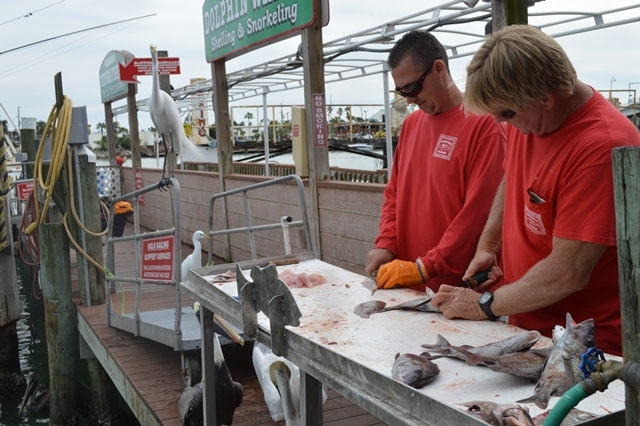
You also get a free comedy show watching the pelicans fight over the discarded fish remnants
So far we have broiled and blackened our gray snapper and both were excellent. It’s a great mild flaky fish. There’s nothing more rewarding than eating what you caught from mother nature with your own two hands.

Hubbard’s Marina went out of their way to provide great service for the entire trip. If you’re a novice, they will put your fears completely at ease. This is definitely my kind of fishing and it will not be my last deep sea fishing trip for sure! I think when the weather turns to spring I want to try the half day night fishing trip! We saw old, young, men, women, families, and even little fisher dudes. This is a really family friendly activity. If it’s something you’ve always wanted to try then go for it!
Things to know to plan your own outdoorsy adventure and what to expect on your first deep sea fishing trip:
- Cost: $55 +tax for adults and half price for 11 years old and under; Pole rental is an additional $7.50 plus tax
- Dress appropriately . If it’s winter like it was for us wear layers and a good undergarment foundation to protect yourself from the elements. If it’s summer….well you’re gonna burn up because we live in Florida and you know that already so just be ok with it. I would probably only go out on the morning trips in the summer time personally because of the heat factor. But it will be worth it when you catch all of those fish. Make sure you wear sunscreen no matter what time of year. Also wear something you don’t mind getting fishy because squid juice…
- Shoe Gam e – Wear a shoe with a rubber bottom and you probably don’t want open toed shoes because of squid juice and flopping fish and hooks. Divas this is a great time to rock those cute sporty rain boots. Also go for comfort because while there are benches onboard the boat, you cannot fish from sitting down. You will be on your feet for a while.
- Bring a hand towel and gloves
- Bring cash – While you can pay for your reservation with a card, you may need cash for incidentals like a hand towel and gloves. You will also want to tip your awesome crew for taking such great care of you and pay to have your fish cleaned.
- Bring a cooler and pack your lunch . I didn’t have time to go get stuff but if I had taken my son and his friends as we planned originally I would have definitely packed up a cooler of drinks and lunch. Just remember no alcohol.
- Don’t bring a banana on the boat . Fisherman believe this is bad luck so don’t be the goober to pull a banana out of your bag.
- Bring an insulated cooler bag or small cooler to put your fish in for the ride home.
- Take motion sickness medication – If you know you get seasick or you aren’t sure, there’s no need to risk being miserable. My son and I both took ours a half hour before our trip and we had no issues though I have experienced motion sickness in the past without taking anything.
- Bring a great attitude and your patience because this is fishing and while we had a great day of catching it’s never a guarantee. You might not catch a darn thing…it’s not the norm but it happens.

Although this was a sponsored activity, all opinions are my own. If we had a miserable time, you’d know it. I promise. Full Disclosure .

Share it with friends!
- Click to share on Twitter (Opens in new window)
- Click to share on Facebook (Opens in new window)
- Click to share on Tumblr (Opens in new window)
- Click to share on Pinterest (Opens in new window)
- Click to share on Reddit (Opens in new window)
- Click to share on LinkedIn (Opens in new window)
- Click to print (Opens in new window)
- Click to email a link to a friend (Opens in new window)
Single mom who loves outdoor adventure, unique travel, foodie adventures, and theme parks in Florida and beyond.
You Might Also Like
5 tips when taking a cruise from san juan puerto rico.

25 Adventurous Things to Do for Spring Break in Florida with Teens

VOLTA Cirque du Soleil Tampa Opening Night Review
26 comments.
Boy, you guys had a great day fishing and look at your catch! :-). I have never fished, but l am positive l would love it. It seems like a great calming experience. You can’t get any fresher than plopping it in the pan :-). Fresh!!! Happy belated birthday to your son!
Carlyn Bullock
OMG – you brought back so many great memories fishing with my boys from the same place! Great experience – OH and PS Loving those boots!!!!
With a smile, Carlyn 🙂
TampaBayBloggers
Thanks Carlyn. That’s great that you shared this memory with your boys too! And I’m glad you like my rain boots!
Jay | RelaxedThairapy.com
I have never been deep sea fishing but I’ve been country fishing in creeks, lakes and ponds. 🙂 Those were some fun times with my great grandmother. Love the boots!
Thanks for reading Jay.
I love how you’re committed to the outdoors lifestyle!! Not sure if deep sea fishing is for me, but that grilled snapper sure does make me consider trying it at least once!
I was surprised at how much I enjoyed it. I hope one day you are able to give it a try.
Dana Carmel
I’ve always wanted to try deep sea fishing! Whenever we go to the Caribbean, I always look into the prices, but it’s always too expensive to justify. But the prices at Hubbard’s are very reasonable. I think it’s so cool that your son chose to spend his bday deep sea fishing – what a unique guy.
Thanks for reading Dana! I’ve checked while on vacation too and I agree the prices are pretty outrageous. I usually just end up booking a snorkeling trip instead. If you you ever come to the Tampa Bay area definitely check them out. 🙂
I freaking love this. It is so outside of the box. You son is way cool, I’ve never been deep sea fishing. I need to add that to my bucket list.
Lol Thanks Mimi! He gets it from his mama. Seriously, I was impressed with him. You should totally add it to your list.
What an awesome adventure! The price isn’t bad at all.
Aisha Johnson Adams
What a great idea! I love it… What a creative way for him to spend his birthday. My son thinks he would like fishing, but he is passionate about throwing the fish back…lol
First off, your boots are super cute! lol. I have never been fishing before, but I definitely want to go one day. I hear its lots of fun
T. Espinoza
This brought back so many memories for me. My dad used to take me fishing when we lived in NY and I loved it! I think my kiddos are still a little young but this is definitely on the list of things to do.
Sarah Anderson
Packing a cooler for lunch is fairly smart. This way you are able to eat as soon as you get hungry, and don’t have to wait for the boat to get back to the docks. I didn’t know about the banana thing though, I’ll have to keep that in mind the next time my family goes on a fishing trip.
That’s good you were able to get recommendations from friends on places to choose for this. Things like that makes finding a good company to take you out on the trip so much easier. I’ve never been deep sea fishing myself though, I should try it out sometime.
Jenny Coacher
Awesome write up. I believe in professionals so this is a very useful article for everyone. Great content, very useful information. Thank you for sharing.
Excellent post. I am impressed with your writing skills. Keep up posting such valuable information. Kudos for you Dude!
Alexandria Martinez
My fiance and I are about to go on a deep sea charter trip and have never been before. We really liked your advice to wear shoes with rubber bottoms. Being on a boat for as long as we will be it will come in handy to have shoes with water proof bottoms.
Awesome. I hope you had a wonderful trip. I’m glad my advice was helpful.
Elsa Anderson
It’s interesting to learn how fun a fishing charter trip can be since the crew is there to help you enjoy your fishing trip as much as possible. They would do everything from unhooking your fish, replacing broken hooks, untangling fishing lines, and others as you’ve mentioned. That would be great since I’ve heard my dad speaking of wanting to fish once more. He used to do it as a hobby back then since we used to live near the ocean and even have our own boat. I’ll schedule a trip with my dad and hire a charter for us. This way we can enjoy fishing without any worries. Thanks!
Fishing in Puerto Vallarta
I am really impressed with the information that you share in this post. Great job dear.
Steele Honda
Thanks for pointing out that when going on a fishing trip you should wear a shoe with a rubber bottom and you probably don’t want open-toed shoes because of squid juice and flopping fish and hooks. I am thinking about surprising my husband with a fishing trip for our anniversary because I think that he would love. I’ve never really been fishing before so I’ll have to remember to get rubber bottom shoes and probably to take some sea sickness pills with me.
Ashley Johnson
I thought it made a lot of sense when you said that you should bring motion sickness medication when you go deep sea fishing. I have noticed that I get seasick when I am on a boat and that is one reason that stops me from wanting to deep sea fish. I will have to consider taking motion sickness medication on my boating trips.
Elaine Wright
Really it was very amazing. and i better feel when i read your content. you have shared good experience with us. Thank you for sharing.
Leave a Reply
Notify me of follow-up comments by email.
Notify me of new posts by email.
This site uses Akismet to reduce spam. Learn how your comment data is processed .
Never Miss Out On an Adventure!
Don’t worry I’m far too busy to spam you.
Subscribe to Mailing List

17 Top Fishing Trip Packing List Items for 2024 + What to Wear & NOT to Bring

When it comes to rewarding wilderness experiences, nothing beats casting a line and bringing home a fresh-caught salmon or mahi-mahi. Fishing is a great way to combine spending time outdoors with catching healthy food to share with your friends and family.
Whether you are headed for alpine lakes or the open ocean for your next fishing trip, you’ll need to be prepared with the right equipment. In this article, we’ll cover everything you’ll need to pack for a safe and fun fishing adventure. Below is a packing list of essential items to bring on a fishing trip with links to Amazon for your convenience, plus info on what NOT to bring or wear.
What to Pack for a Fishing Trip - 17 Essentials
1. packing cubes.
All experienced fishermen understand the importance of packing right and that on a fishing trip, organization is everything. These HERO Packing Cubes make it possible to pack your clothes in a much smaller space, which means you can bring more fishing gear. They also make it much easier to find your clothes when you need them.
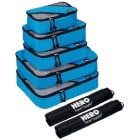
View on Amazon.com ➜
2. Fishing Pole
For most kinds of recreational fishing, the pole is the most important piece of gear. This telescopic fishing rod is perfect for drive or hike-in fishing trips, and it’s an ideal setup for small to medium-sized fish. Remember, different types of fish require different poles, so you’ll need to swap poles for fly fishing or large saltwater fish.

3. Neck Wallet
I bring this on all of my international fishing trips. Sometimes, in order to get to the best fishing spots, it’s necessary to travel through dangerous areas. In order to protect my most important belongings from pickpockets, I keep my passport, cash, credit cards, and keys in my HERO Neck Wallet. Since using this neck wallet, I’ve traveled through dozens of countries on five continents and never had a single dollar stolen.
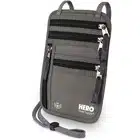
4. Squid Lures
These squid lures work like magic for large saltwater fish in tropical areas. In 65,000 miles of sailing all over the world, I’ve tried every lure I could get my hands on. But for tuna and mahi-mahi, I’ve had the best luck with these squid lures. I tow one of these behind my boat almost all the time while sailing offshore.

5. Cooling Towel
On a fishing trip, your towel has too many uses to count. Of course, it’s great for drying off after a swim, but it can also be used to clean up a mess or protect an injury while someone gets the first aid kit. This towel is perfect for travel, since it packs away to a very small size, and it dries off in minutes.
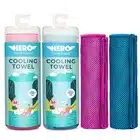
6. Tackle Box
Every fisherman needs their tackle box. That’s where you’ll keep your extra line, hooks, sinkers, bait, and tools. I found the Flambeau Two Tray Tackle Box to be an ideal size and design for short fishing trips. It’s small and lightweight, yet has enough space to keep plenty of gear for a couple-day adventure. I use this tackle box for short trips and keep a larger one at home with extra gear for longer expeditions.

7. Quick-dry Travel Towel
If you are like me, you are probably tired of traveling with a towel that takes forever to dry off. I suffered from this problem for ages, until I discovered the HERO Quick Dry Travel Towel. It’s an ideal size for travel and dries out in no time. After taking this towel on a recent trip, I liked it so much that I ordered five more for my fishing buddies.
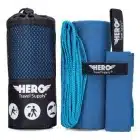
8. Heavy Duty Fishing Line
One of the most common mistakes that beginning saltwater fishermen make is to use fishing line that is too small. If you have done some lake fishing, you are probably used to using line that looks like dental floss. For offshore, you’ll need a much heavier line – like 100 lbs+. This heavy-duty fishing line has worked great for me and has yet to break.

9. Lifestraw Water Bottle
Often, I find myself running out of fresh drinking water while fishing, even when I am standing in a lake or stream. The easiest solution is to use a Lifestraw Water Bottle, which has a built-in filter, so you can fill up from any source of freshwater and simply drink. No more worrying about pumping, water tablets, or boiling your drinking water – just fill and go.
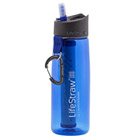
10. Lifejacket
Any time you are fishing from a boat, it’s important to wear your life jacket. The downside is that with a lifejacket on, it’s impractical to wear a fishing vest. This lifejacket was built specifically for fishermen so that you can fish safely and still keep your gear close by for instant access. This is the best lifejacket for recreational fishing I have found yet.

11. Universal Waterproof Phone Case
I tend to go fishing to get away from my phone and computer. But sometimes a smartphone is a useful fishing tool for navigation, communication, weather info, or as a camera. In order to keep my phone safe from water damage, I keep it in this Universal Waterproof Phone Case whenever I bring it on a fishing trip.
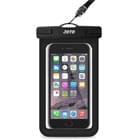
12. Hanging Toiletry Bag
Toiletries aren’t the first thing that comes to mind when you are packing for a fishing adventure, but every fisherman needs to take care of their personal hygiene, too. I take this Hanging Toiletry Bag with me on all my fishing adventures, and I’ve found it’s perfect for any trip up to two weeks.
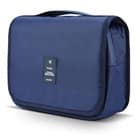
13. Floating Wrist Strap
Over the years, I’ve lost a number of valuable items simply because I dropped them into the water at the wrong time. Offshore, it’s simply too dangerous to try to dive in after a dropped item, no matter how special it is. This Floating Wrist Strap solves the problem by keeping your valuables afloat, so all you have to do is turn the boat around and scoop up the lost item.

I’ve waded across enough ice-cold rivers in my jeans to have developed a real appreciation for waders. If you like to go fly fishing or plan on standing in the water for any length of time, they are absolutely necessary. With this set of waders, you can fish all day in freezing water and still return home warm and dry at the end of the day.

15. Portable Charger
A couple of trips back, I forgot my portable charger and ended up with a dead cell phone battery and a nervous wife. Now I keep one of these chargers in my fishing vest, one in my day pack, and another in my lifejacket at all times. No matter where I am, I know I’ll get at least one more charge on my phone – just in case I need it.

16. Fishing Daypack
Like any outdoors person, fishermen need a pack to carry their gear around all day, and yet there are surprisingly few daypacks designed specifically for us. This pack is the exception to the rule, and it’s ideal for day trips to alpine lakes and remote rivers. This pack is versatile and durable, and it has plenty of room for all your gear for a full-day fishing adventure.

17. Travel Insurance
Fishing trips can sometimes be risky endeavors, especially if you like to fish offshore or in remote wilderness areas. In order to be prepared for the worst-case scenario, it’s a good idea to invest in travel insurance . You hope you’ll never need it, but if you do it could be a literal lifesaver.

Compare policies at TravelInsurance.com ➜
Other Fishing Trip Packing List Items Not to Forget
- Luggage Belts
- Luggage Locks
- Hand Casting Spool
- Handheld VHF
- Waterproof Duffel
- Sleeping bag
- Portable Bucket
- Fish Identification Guide
- Satellite Messenger
- Leatherman Multitool
- Handheld GPS
- Portable Solar Panel
- Waterproof Bags
- Trekking Pack
- Sleeping Pads
- Depth Sounder
- Fishing Weights
- Fly Tying Kit
- Insect Repellant
- First Aid Kit
- Fishing Knife
- Inflatable Raft
- Portable Radio
What to Wear on a Fishing Trip
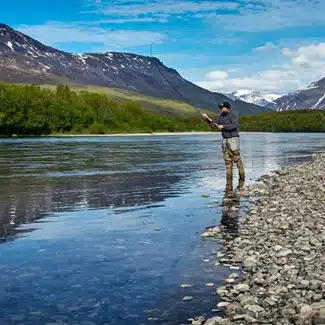
Below is a sample women’s clothing list. (All items link to Amazon.com for your convenience).

Below is a sample men’s clothing list. (All items link to Amazon.com for your convenience).

Packing for the Seasons for Fishing
Spring – march, april, may.
In the spring, you can expect to encounter a mix of rain and sun, and there is a chance of getting hit with freezing temperatures early in the season. This time of year, it’s best to dress in layers, so that you can add or remove clothing as necessary to suit the current conditions. Start with a warm base layer and add hiking pants and a long-sleeved shirt . If it’s cold, layer up with a hoodie or sweater , and if you are fishing from a boat, don’t forget to wear your life jacket.
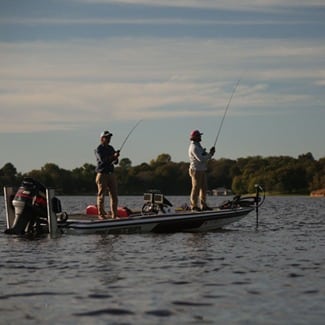
SUMMER – June, July, August
In the summer, you’ll want to be prepared for the sun and heat. It’s always nice to fish in shorts and a t-shirt , but don’t forget to put on plenty of sunscreen and wear a sunhat and glasses . If you are fishing from a boat or near a swift-flowing river, don’t forget to wear your life jacket. Evenings can be cool, so keep your warm layers and rain jacket close by.
Always remember that even in the summertime, hypothermia is a real risk. Most fishing emergencies happen this time of year when it’s least expected. If you are fishing from a boat or in a place where you are likely to fall in the water, it’s a good idea to invest in a dry suit, which will keep you warm even if you fall in the water.
FALL – September, October, November
In the fall, dress for a wide variety of conditions. Start with a warm base layer and wear hiking pants or shorts depending on the conditions. Wear activewear shirts , and always keep a hoodie or down jacket ready for use. Late in the fall, be prepared to encounter freezing conditions or even snow.
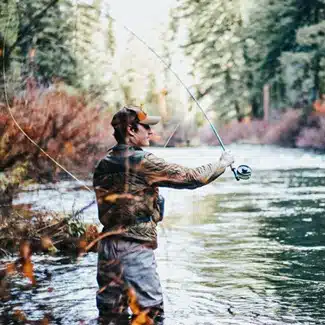
WINTER – December, January, February
Winter fishing can be surprisingly rewarding if you are prepared for the weather. I’ll never forget my first-time ice fishing from a hole cut in a lake. In the winter, you’ll likely have your favorite fishing spot to yourself.
To fish in the cold season, you’ll need to be dressed for the worst-possible weather. Start with a full set of long underwear and wool socks , then add fleece pants , a sweater , and a down jacket . Cover up with a waterproof coat and pants , and don’t forget your gloves and boots . Keep your head warm with a beanie .
Fishing in Lakes and Rivers: For fishing in lakes and rivers, you’ll probably end up wearing waders much of the time. If the weather is warm, you may only need shorts and a t-shirt underneath, with a sunhat and glasses for sun protection and a fishing vest to keep your lures handy. Keep your hoodie and rain jacket close by in case the weather changes.
Coastal Fishing: While fishing from a boat, safety should always be on your mind, even while close to shore. Whenever the boat is underway, you’ll want to wear your lifejacket . Sunburn can be a serious hazard on the water even when it’s overcast, so you’ll want to remember to wear your sun protection . If it’s windy, throw on a sweater or windbreaker to keep warm.
Deep Water Fishing: The open ocean is one of my favorite places to fish, and I’ve sailed towing a trolling line for tens of thousands of miles. On the ocean, always wear a safety harness so that you are connected to the boat at all times. The weather can turn rough fast offshore, so you’ll want to have a set of foul weather gear close by at all times. Dress in layers underneath your follies and wear waterproof boots to keep your feet dry.
What NOT to Bring on a Fishing Trip
1. don't bring expensive electronics.
It’s unwise to bring temperamental electronics anywhere near a body of water as they are likely to get damaged or ruined. Instead, bring a waterproof radio and keep your phone in a waterproof case .
2. DON'T Bring City Clothes
There is no need for a fancy suit or dinner dress on the river or out at sea. Save your fancy clothing for your triumphant return, and wear your fishing vest or drysuit instead.
3. DON'T Bring Illegal Fishing Devices
The seas are running out of wild fish, and it’s only fair to give the ones that are left a fair chance of survival. That’s why it’s often illegal to fish with a speargun, a throw net, barbed hooks, or explosives. Keep it legal and leave some fish for the next generation.
4. DON'T Bring Too Much Gear
Unless you are fishing from your own yacht, it’s likely that you’ll have to haul your gear around under your own muscle power. That’s why it’s best to leave any unnecessary gear behind, especially bulky and heavy items.
5. DON'T Bring Remote Internet Hotspots
Some people fish to get away from the rat race, others can’t stand to leave it behind. Take it from me that remote internet hot spots will rarely work on a fishing trip.
6. DON'T Bring the Wrong Fishing Setup
First-time fishermen often bring fly-tying gear to catch tuna or attempt to use a swordfish lure to attract lake trout. Take a few minutes to research the appropriate fishing gear for the type of fish you want to catch, that way you don’t have to improvise out on the water.
Just like formal attire has no place on a fishing expedition, the same goes for cotton clothing, which becomes cold once wet and increases your risk of getting hypothermia. Instead, you’ll want to dress in activewear clothing made from synthetic materials or animal hair, like wool. Don’t dress in excessively heavy or bulky clothing, as you’ll need to be agile and fast on your feet to reel in the big one.
FAQs about Fishing Trips
1. will i need to buy fishing licenses.

Sometimes, it’s legal to fish without a license in certain areas, but in 99% of cases, you’ll need to buy a fishing license. The good news is that recreational fishing licenses are usually cheap and easy to obtain. You can find fishing licenses at many general stores, gas stations, or even Walmart. It’s always better to be prepared and have a license because the fine for not having one can be pretty steep.
2. What is the best way to get started as a beginner fisherman?
If you’ve never fished before, there are many ways to gain experience. You could choose to hire a guide if you like, or maybe you prefer to simply read a book about fishing, buy a pole and tackle box and go. Most people learn best by fishing with friends who have previous experience.
3. Should I charter a boat for coastal or offshore fishing?

If you want to fish in the open ocean and don’t have previous experience, it’s a good idea to hire an experienced skipper to take you out and back safely. A professional fishing charter company should be able to take you to places with a good chance of catching a trophy fish, and you won’t have to worry about taking care of the boat.
4. Should I hire a guide?
If you are new to fishing and want to get advice from an experienced fisherman, hiring a professional guide can be a good way to get started. Others enjoy the challenge of figuring things out by themselves. If you do hire a guide, do your homework to make sure you are really hiring a professional.
5. What should I use for bait?

The ideal bait depends entirely on what type of fish you are planning to catch. Some people swear by worms, while others only use squid or minnows. I have had some luck in the tropics using dead flying fish to catch dorado. It’s best to experiment for yourself and find the type of bait that works best for you.
6. How can I go crabbing or shrimping?
Unlike fishing with a hook and line, crab and shrimp are usually caught in a trap with bait. To try crabbing, buy a pot, float, line, and permit, set it in a good spot with bait, and return several hours later to see if you have caught anything. Shrimp are caught in much deeper water. Ask the locals for the best places to give it a try.
7. Can I fish inside the National Parks?

That depends. In some national parks, park management makes use of fishermen to help reduce the number of non-native invasive fish. In many cases, you can keep as many introduced fish as you can catch. Native species inside national parks are likely to be protected. Always check the park website for regulations before you travel.
8. How can I find the best places to catch fish?
Fishing is indeed an art, and it takes many years to get good enough to develop a sense of when and where to find the most fish. But even a beginner can use a few tips to their advantage: fish like to bite around dawn and dusk, they like deep, shady pools in rivers or lakes, and they often bite when it’s raining. You’ll get more adept at spotting the signs each time you go out.
9. How long should a fishing trip last?

Some people get burnt out after just a few hours of fishing, others can go at it all day for weeks at a time and never get tired. I would recommend for beginner fishermen start with half-day excursions and slowly work up to the point where they can fish for a whole week and enjoy the entire trip.
10. What about catch and release fishing?
I have met people who only do catch and release fishing because they don’t want to kill the fish or they are vegetarians. But the sad reality is that most fish that have been caught and released don’t survive long due to their injuries. It’s best to only fish if you plan to kill and eat the fish that you catch.

Family Fishing Trip Essentials: What to Pack for Success
Did you know that more than 34 million people in Canada engage in fishing activities each year? Whether it’s casting a line in a serene lake or battling the waves on a deep sea fishing charter, fishing is a popular pastime for families across the country.
Planning a family fishing trip? It’s important to pack the right gear to ensure a successful and enjoyable experience for everyone involved. In this article, I’ll provide you with a comprehensive packing list of essential items that you should bring on your family fishing adventure. From fishing gear to safety items, I’ll cover it all to help you create lasting memories with your loved ones.
Key Takeaways:
- More than 34 million people in Canada participate in fishing each year.
- Packing the right gear is crucial for a successful family fishing trip.
- This article will provide a comprehensive packing list of essential items.
- From fishing gear to safety items, we’ve got you covered.
- Ensure an enjoyable experience and create lasting memories with your family.
Essential Fishing Equipment And Tackle
When preparing for a family fishing trip, it’s crucial to have the right gear to ensure a successful and enjoyable experience. The essential fishing equipment and tackle are the primary items you should pack for your adventure. These include:
- Fishing Pole & Reel: Choose a fishing pole and reel suitable for the type of fishing you’ll be doing, such as freshwater, saltwater, or ice fishing.
- Fishing Line: Select the appropriate fishing line based on the targeted species and fishing conditions.
- Hooks, Bait, And Lures: Carrying a variety of hooks , bait, and lures will increase your chances of attracting different fish species.
- Tackle Box: Keep your fishing accessories organized and easily accessible with a tackle box .
- Polarized Sunglasses: Protect your eyes from the sun’s glare and enhance your visibility while fishing.
- Fishing License: Comply with local fishing regulations by obtaining the necessary fishing license .
Having the right fishing equipment and tackle is crucial to optimize your chances of landing a catch. By selecting the appropriate gear and obtaining the required licenses, you’ll be well-prepared for a successful fishing trip.
Table of Contents
Safety And Comfort Items
Safety and comfort should be a top priority during your family fishing trip. It’s important to bring essential items that will ensure the well-being and comfort of your family throughout the fishing trip. Here are the safety and comfort items you should pack:
- Life Jacket: It’s crucial to have a life jacket for everyone on board, regardless of their swimming abilities. Safety should always come first, especially when near bodies of water.
- First Aid Kit: Accidents happen, so it’s essential to have a well-stocked first aid kit on hand. Make sure it includes bandages, antiseptic wipes, pain relievers, and any necessary medications for your family members.
- Sunscreen And Bug Spray: Protect your skin from harmful UV rays and annoying bug bites with suitable sunscreen and bug spray . Apply them regularly to ensure maximum protection for your family’s well-being.
- Hat: Shield yourself from the sun’s rays by wearing a hat with a wide brim. It will help keep the sun off your face and protect you from sunburn.
- Proper Clothing: Dress appropriately for the weather conditions. Layer up or down, depending on the temperature and pack rain gear if necessary. Comfortable and breathable clothing is essential for an enjoyable fishing experience.
- Snacks And Water: Stay hydrated and energized by bringing along an ample supply of snacks and water . Fishing can be physically demanding, and it’s important to keep your energy levels up throughout the day.
- A Cooler: Keep your snacks and drinks fresh by bringing a cooler . It’s a handy item to have, especially during warm weather.
By packing these safety and comfort items , you’ll ensure a worry-free and enjoyable family fishing trip. Remember, it’s always better to be well-prepared and prioritize the safety and well-being of your loved ones.
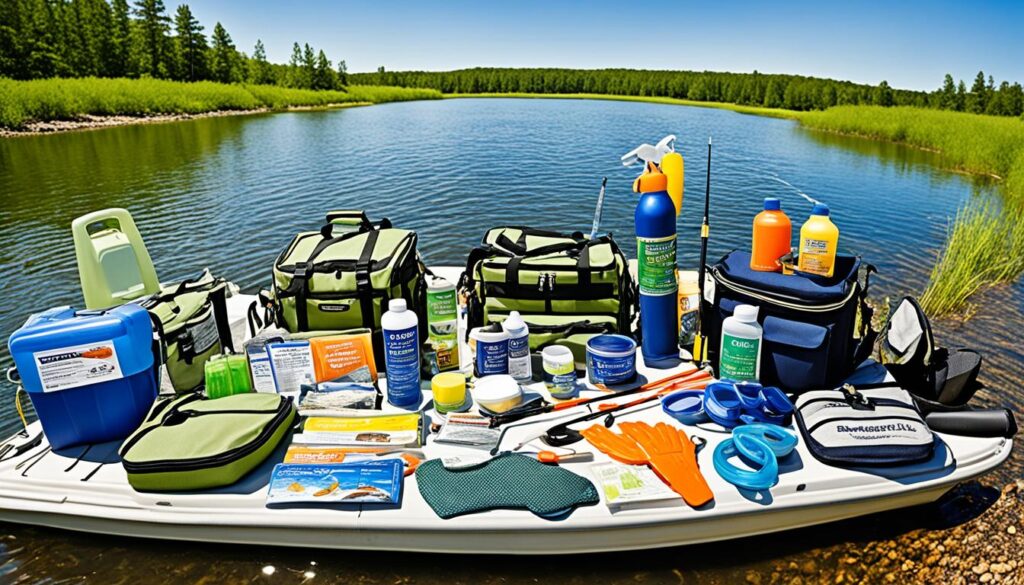
Gear For Fishing In Cold Climates
If you are planning a family fishing trip in cold climates or during the winter season, it’s important to pack appropriate gear to stay warm and comfortable. This includes extra layers of clothing , hand warmers , waders , an ice fishing auger , and an ice fishing sled .
Extra Layers Of Clothing :
- Thermal Underwear
- Insulated Pants and Jackets
- Warm Hats and Gloves
Hand Warmers :
- Disposable Hand Warmers
- Reusable Hand Warmers
- Insulated Chest Waders
- Neoprene Waders
Ice Fishing Auger :
- Manual Ice Auger
- Gas-Powered Ice Auger
Ice Fishing Sled :
- Pull-Behind Ice Fishing Sled
- Tow-Behind Ice Fishing Sled
Stay Warm and Enjoy Your Fishing Adventure
When fishing in cold climates, it’s crucial to dress in layers to trap heat close to your body. Thermal underwear, insulated pants and jackets, wool socks, and warm hats and gloves will provide the extra warmth you need. To keep your hands warm, pack disposable or reusable hand warmers. Waders are essential for fishing in cold water, whether you choose insulated chest waders or neoprene waders. Don’t forget to bring an ice fishing auger to drill holes in the ice and an ice fishing sled to transport your gear. Stay prepared and comfortable in the cold weather, and make the most of your family fishing trip!
Gear For Fishing When It’s Hot Out
If you’re planning a family fishing trip in hot weather, it’s important to pack gear that will keep you cool and protected from the sun. Here are some essential items to consider:
Sun-protective Clothing: Invest in lightweight, breathable clothes that cover your skin and provide UPF sun protection. Long-sleeved shirts, wide-brimmed hats, and neck gaiters are great options to shield you from harmful UV rays.
Water Shoes: Choose water-friendly shoes that provide comfort and protection while keeping your feet cool. Look for sandals or sneakers with quick-drying and non-slip soles to navigate wet terrain and rocky shores.
Portable Fan: Beat the heat by bringing a portable fan to provide some relief. Opt for a small battery-operated fan that you can easily carry and position to cool down during breaks or when the sun gets intense.
Ice Packs: Keep your snacks and drinks cool by packing ice packs in an insulated cooler. Refreshing drinks and chilled snacks will help you stay hydrated and energized throughout your fishing adventure.
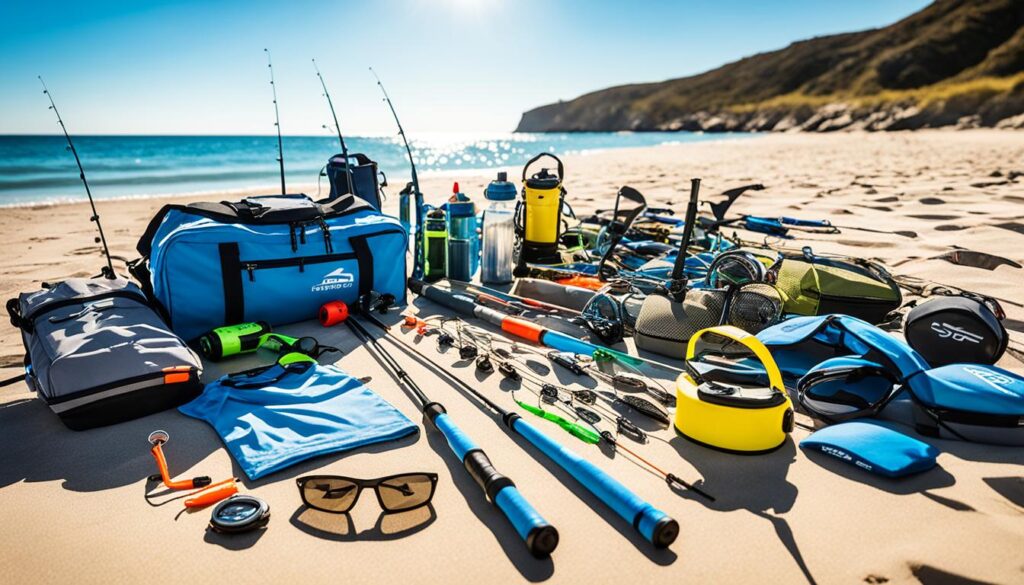
With the right gear, you and your family can enjoy a comfortable and safe fishing trip even in hot weather. Sun-protective clothing , water shoes , a portable fan , and ice packs will ensure that you stay cool and protected from the sun’s harsh rays. So pack these essentials and get ready for an enjoyable fishing experience!
What To Bring On A Deep Sea Fishing Charter
If you’re planning a family fishing trip on a deep sea fishing charter, there are some additional items you should bring. This includes appropriate clothing to protect you from the sun and wind, non-marking shoes to avoid damaging the deck of the boat, waterproof bags to keep your personal belongings dry, and motion sickness medication in case anyone in your family is prone to sea sickness. These items will ensure a comfortable and enjoyable deep sea fishing experience for the whole family.
When heading out on a deep sea fishing charter, it’s important to dress appropriately for the trip. The open waters can be unpredictable, so wearing the right clothing is crucial. Opt for lightweight, breathable clothing that provides protection from the sun’s rays and potential splashes. A hat and sunglasses are also essential to shield your eyes from the glare. Don’t forget to apply sunscreen to any exposed skin to prevent sunburn.
Another key consideration when packing for a deep sea fishing charter is footwear. It’s crucial to wear non-marking shoes to avoid damaging the deck of the boat. Opt for comfortable and sturdy shoes with non-slip soles to ensure stability while onboard.
Waterproof bags are also essential on a deep sea fishing charter. They come in handy for storing your personal belongings, such as cameras, phones, and wallets, keeping them safe and dry throughout the trip. Look for bags with secure closures and waterproof materials to protect your valuables from the water.
Lastly, if anyone in your family is prone to motion sickness, it’s wise to bring along some motion sickness medication . The rolling waves of the open sea can cause discomfort and nausea for some individuals. Consult with a healthcare professional beforehand to determine the most suitable medication and dosage for yourself or your family member.
By packing appropriate clothing , non-marking shoes , waterproof bags , and motion sickness medication , you’ll be well-prepared for a comfortable and enjoyable deep sea fishing experience with your family. Remember to check with the fishing charter company for any additional items they recommend bringing to make the most out of your trip.
In conclusion , having the right gear is crucial for a successful and enjoyable family fishing trip. By following the packing checklist provided in this article, you can ensure that you have all the necessary equipment and items to make your trip a memorable one. Whether you’re fishing in cold climates, hot weather, or on a deep sea fishing charter, being prepared with the right gear will enhance your family’s fishing experience.
Remember to pack essential fishing equipment and tackle such as fishing poles and reels, fishing lines, hooks , bait and lures , tackle boxes, polarized sunglasses , and fishing licenses. Don’t forget to prioritize safety and comfort by including items like life jackets, a well-stocked first aid kit , sunscreen, bug spray, hats, proper clothing , snacks and water , and a cooler . Additionally, consider packing specific gear for fishing in cold climates or hot weather, as well as for a deep sea fishing charter.
So pack your essentials, have fun, and create lasting memories with your loved ones on your family fishing adventure. Enjoy the beauty of nature, bond with your family, and make the most out of your time spent fishing. With the right gear, you’ll be well-prepared for a successful and unforgettable family fishing trip.
What are the essential fishing equipment and tackle items to pack for a family fishing trip?
What safety and comfort items should i bring on a family fishing trip, what gear should i pack for fishing in cold climates, what gear should i pack for fishing when it’s hot out, what should i bring on a deep sea fishing charter, source links.
- https://theoutdoorauthority.com/what-to-take-on-a-fishing-trip/
- https://www.sportfishingmag.com/travel/essential-gear-of-fishing-travel/
- https://www.realgirlreview.com/my-fishing-trip-packing-list/
Related Posts
- The Best Windbreakers for Kids: Staying Warm and Stylish
- Spring Break Adventures: Family-Friendly Outdoor Activities
- Winter Wonderland: Best Snowshoeing Gear for Families
- The Importance of Learning Financial Literacy in Schools
- Parental Involvement in Education: Finding the Right Balance
- Encouraging Girls in STEM: Overcoming Stereotypes and Barriers
- Effective Study Techniques for Different Learning Styles
- Decoding Your Child’s Report Card: Beyond Grades
I'm a mom of 3 and has a passion for helping children reach their human potential. She enjoys helping parents raise confident and healthy kids by explaining how to handle situations using positive and peaceful parenting. I believe that creating strong bonds through small daily interactions is super powerful in changing behavior to the positive direction. It really only takes a few moments a day! Welcome to my blog, and I hope you find a lot of value here.
Leave a Reply
Your email address will not be published. Required fields are marked *
This site uses Akismet to reduce spam. Learn how your comment data is processed .

412.352.8703
Wildside adventures blog, what to pack for an international fishing trip.
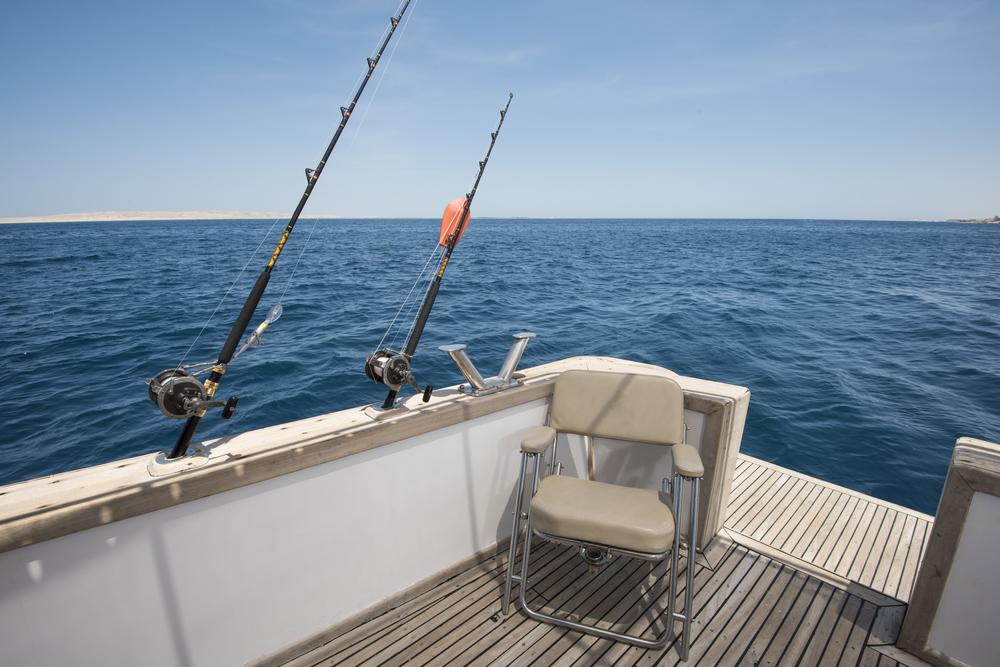
It is only human nature to want to take everything you think you could possibly need when packing for vacation. However, you must fight this urge as the reality is you can get by with a lot less than what you think. Obviously, you will need to tailor your gear for each trip, and packing for Alaska fishing trips or Canada fishing tours will be different from packing for an Iceland fishing tour. Regardless of your destination, packing is not that complicated if you do some research on the area’s weather and the species of fish you will be targeting and follow these guidelines:
Whether packing for do-it-yourself trips or going on luxury fishing tours, having functional and good-quality bags is an absolute must. While one larger bag may seem like a good idea, two smaller bags will be easier to carry and will fit better in the back of an auto, a rooftop rack, a boat, and the cargo hold of small planes. Also, bear in mind that weight and space are always issues when traveling by small aircraft. Ideally, you will want one bag for your clothing and personal items and a second for your fishing gear. Specially designed day packs made specifically for fishing gear are ideal for traveling.
You will need to adjust your clothing for the climate you will be visiting, and different items will be needed for trips to the Florida Keys than for Alaska fishing trips. However, to keep things manageable, pack no more than two changes of clothes in addition to the ones you will be wearing. This will always allow you to have one set to wear, one in the wash, and one spare, clean set. Here is a list of all you really need:
- One lightweight jacket.
- One heavyweight jacket.
- One sweatshirt or sweater.
- Two long- and two short-sleeve shirts, either pull-over or button-up.
- Two pairs of convertible cargo pants. These are the smartest choice as they have plenty of pockets for all your gear, and the legs zip off to become shorts.
- Two sets of long underwear for colder climates.
- Socks: This is one item where you should take extras, as wet feet are no fun. Six or seven pair is plenty. Add four pair of heavy socks for colder climates.
- Camp shoes or slippers (optional).
Fishing Gear
For those taking luxury fishing trips, find out if the lodges or outfitter will provide all your tackle. Otherwise, you will need to choose your gear wisely. Unless you are a tournament fisherman, you don’t need to haul every piece of tackle ever made around the world with you. Here is how to keep it simple:
- Fishing Rods: A rod to an angler is like a rifle to a big-game hunter. It is the single most crucial piece of equipment, so choose it wisely. While two- and three-piece take-down rods are the norm for traveling, give serious consideration to telescopic collapsible rods. The newer telescopic rods are just as powerful and light as traditional rods and take up way less space, so you can fit multiple rods in your bags.
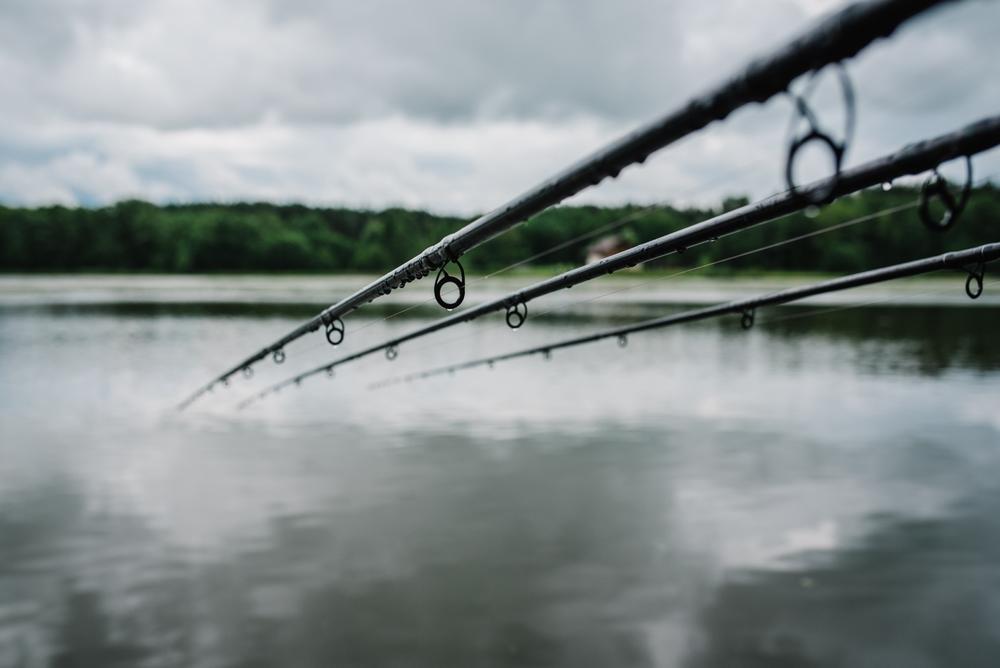
- Reels: Take at least two reels so you will have a spare. An extra spool for each reel, preloaded with a line, will save time on the water.
- Line and leader material: Bring a roll of leader material and enough extra line to re-spool your reel at least twice.
- Sinkers and Swivels: Check local regulations to see what types of metals are legal. Some areas have restrictions on lead and other heavy metals in and around their waters. Once you are sure of the type, bring at least two dozen of each.
- Lures: Unless you are a dry-fly fishing purest, bear in mind countless fishing studies have shown wet flies are more productive than dry flies, and spinning lures are just as productive as wet flies. Lures like the Panther Martin FishSeeUV lures, which give off an ultraviolet glow underwater, are deadly for all species of fish. If you are a dedicated fly fisherman, check with your outfitter, lodge, and local tackle shops for current fishing conditions and fly recommendations, regulations, and restrictions.
- Fishing pliers or forceps.
- Pocket knife. Just be sure not to put it in your carry-on bag.
- Waders: Stocking foot waders and wading shoes are a lot lighter and take up way less space than boot-style waders or even hip boots. Do not bring felt-soled wading shoes, as many areas have banned these due to the felt transmitting pathogens between waterways.
- Vest: A good fishing vest will keep all your gear handy. A fishing-vest style PFD is a wise choice if you will be going out on a boat and aren’t a strong swimmer.
- Sunglasses: Polarized sunglasses protect your eyes from dangerous UV light and cut the glare to allow you to see into the water. Have a pair to wear and a spare pair. A good neoprene glasses cord will keep them handy and prevent them from falling into the water.
- Lightweight neoprene fishing gloves for cold climates.
- Small Drybag: This will keep your phone, wallet, and other miscellaneous items dry and secure.
Personal Items
While having the right clothing for each trip will keep you comfortable, this list of personal items will be the same for all of your spin and fly fishing tours:
- Prescription Medications: Have all your prescriptions filled and keep them in your carry-on when flying commercially.
- Travel-Size Bottles: Buy a set of three-ounce clear plastic bottles and fill them with your brand of shampoo, mouthwash, laundry soap, and other necessary liquids. Pack a travel-size can of shaving cream and a few disposable razors.
- Sunscreen: Irrelevant of the time of year or cloud cover, always wear at least a 30 SPF sunscreen when on the water.
- Insect repellent: Pack a good bug spray with picaridin, an all-natural lemon-eucalyptus oil preparation, or have at least 50 percent DEET.
- First-Aid Kit: Pack or buy a small kit with a dozen adhesive bandages, half a dozen alcohol swabs and gauze pads each, a roll of medical tape, antibiotic ointment, your favorite pain reliever, over-the-counter antihistamines, and a tick-removal tool.
Documents and Money
You will need various documents depending on the country you will be traveling to. Check with the local embassy in your destination country for specific requirements. Here is a general list:
- Passport: If you have a current passport, be sure the expiration date is at least two weeks past your expected return date in case you experience some type of delay or want to extend your trip.
- Vaccination records.
- Money: Be sure to bring plenty of cash just in case your plastic should stop working for whatever reason.
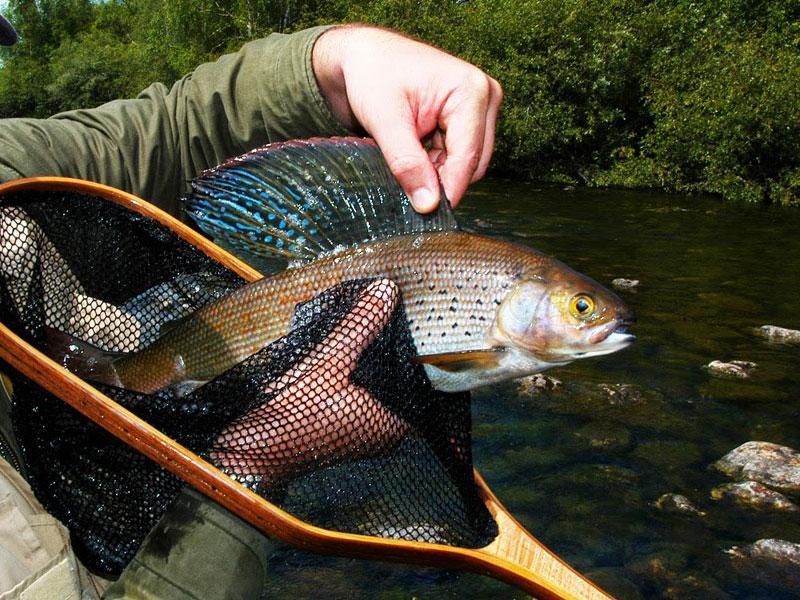
When traveling, less is always more, and no one ever comes back from a trip thinking, ‘the next time I go away, I am going to bring more stuff.’ If you actually have to ask yourself if you need something, then you most likely don’t and just the items on this list will keep you going indefinitely. If you need help booking your trip, Wildside Joe books luxury hunting tours and fishing excursions all around the globe. He hosted “Joe’s Wildside Adventures” for 10 years on the Sportsman Channel, FOX, and ROOT Sports. Visit Joe’s YouTube channel WildsideJoe to see some of his adventures. You can contact Joe at Wildside Adventures Travel Service, wildsidejoe.com or call him at 412-352-8703 .

Contact us Today and Get Your Adventure Started!
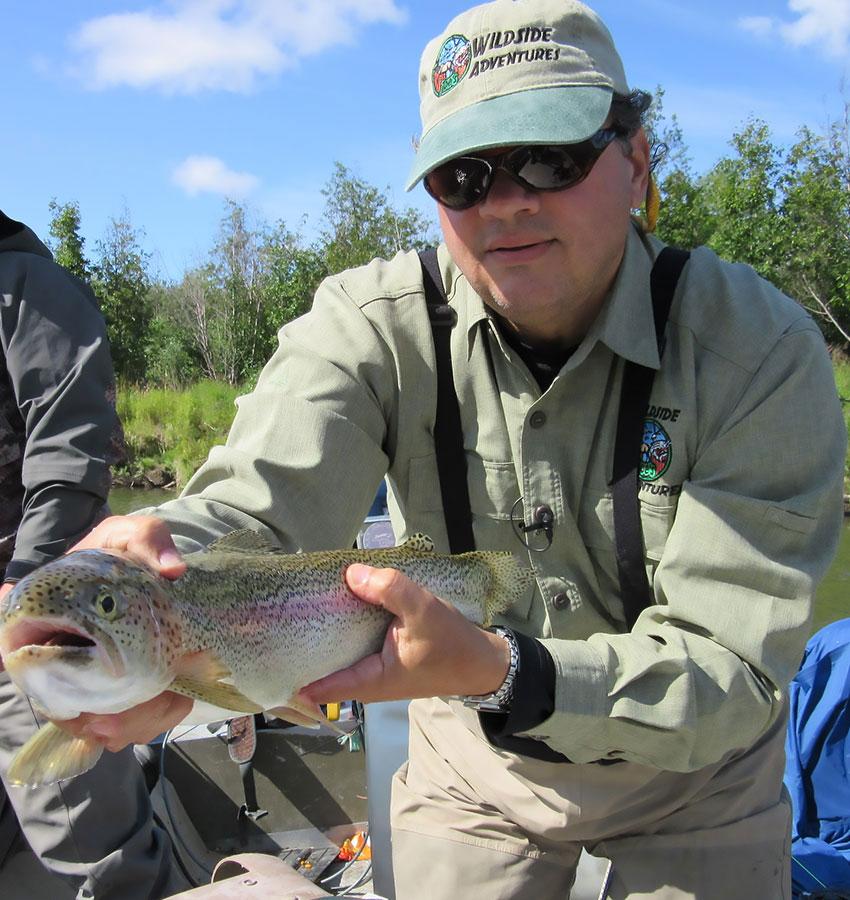
Our Partners:
Join our email list.

Email: [email protected] Phone: 412 .352.8703
© Copyright 2019 - 2024 | Wildside Adventures | All Rights Reserved | Designed by Send It Rising | 100 Demmel Dr, McMurray, PA 15317
Jurassic Lake Lodge
Space is limited so book your trip today! Click now to book this adventure today!
Embarking on this journey to Jurassic Lake Lodge is more than just a fishing trip; it's an opportunity to reel in the trout of your dreams in a truly spectacular setting. This adventure promises monster catches and unforgettable memories that will last a lifetime. Click here to learn more about this exciting trip!
Time Is Limited
SPECIAL $8000 !
Fill out our form or call 412-352-8703 and we will immediately get your spot reserved.
Reserve your ROD today!
- Search Please fill out this field.
- Manage Your Subscription
- Give a Gift Subscription
- Sweepstakes
- Travel Products
I’ve Been on 50+ Cruises, and These Are the 15 Things I Never Sail Without
Add these game-changing products to your packing list ASAP.
:max_bytes(150000):strip_icc():format(webp)/BrittanyChrusciel-129da325ae6244629647fee71c5181c4.jpg)
We independently evaluate all recommended products and services. If you click on links we provide, we may receive compensation. Learn more .
Travel + Leisure / Marcus Millan
For most people, a cruise is a long-awaited vacation on the high seas. But for me, it’s a lifestyle — in fact, it’s my profession. My love of cruising began years ago when I studied abroad on a world cruise through the Semester at Sea abroad program in college, and it’s safe to say I’ve been infatuated with the idea of sailing ever since. There's just something about being out on the ocean and waking up to a different destination every day that creates such a perfect dichotomy of traveling by land and sea.
I’ve now been reporting on the cruise industry professionally for more than a decade and have embarked on my fair share of cruises (at least 50 so far!), each one with its own unique packing list. I’ve sailed on the planet’s largest cruise ships , as well as some of the smallest on rivers, lakes, and oceans, even crossing the equator. I’ve packed for an Alaska sailing on a cruise line that required formal dress every night and, last summer, I survived with just a carry-on bag for a three-week, back-to-back trip that began in Milwaukee and ended in Stockholm.
While every cruise is different, and every itinerary has its own packing requirements, there are a few items that I find myself always tossing in my bag regardless of where I’m headed. From versatile travel bags and waterproof apparel to game-changing gadgets and toiletries, these are the 15 must-have things you'll always find on this avid traveler's cruise packing list .
Sorel Out N About III Waterproof Sneakers
Sure, warm-weather cruising is a haven for flip-flops and sandals, but I've found that sneakers are a must-pack item for almost any cruise. Whether you’re considering taking a hiking or biking excursion, or you’re thinking about trying out the onboard rock-climbing wall, go-kart track, or ropes course, closed-toed shoes are required for all the above. I really like my Vessi Everyday Classic sneakers for cruising because they are wildly comfy and supportive. They're also lightweight if I need to pack them and totally waterproof.
Another solid — and slightly cheaper — option are Sorel’s Out N About III Waterproof Sneakers . They’re super stylish and come in four neutral colors, offering ankle support, removable insoles, and sleek leather trims to make them more stylish and comfortable than your average athletic kicks. In addition to being waterproof, which is useful if you’re caught out in one of Florida’s famous sun showers, these shoes are also certified for sustainability.
Supergoop Play Sunscreen
In the wise words of Pulitzer Prize-winning journalist Mary Schmich, “Wear sunscreen. If I could offer you only one tip for the future, sunscreen would be it.” I must heartily agree. It doesn’t matter if your cruise is in Alaska or Antigua, Hawaii or Holland — the sun shines everywhere. For this reason, a reliable sunscreen is a vital item for any trip, and especially a cruise. Between long days spent exploring in port and sea days out on deck soaking up the rays, the last thing you want to worry about on your vacation is a nasty sunburn.
Sunscreen has had somewhat of a glow-up in recent years, offering high SPF protection in reef safe and more skin-friendly formulas. These are just a few of the qualities that keep me reaching for Supergoop’s Play Sunscreen , which offers broad-spectrum SPF 50 for the body and face in a non-greasy lotion. Not only is it water- and sweat-resistant, but I can snorkel and swim confidently with a recipe free of oxybenzone and other chemicals known to harm reefs (some ports of call, including the U.S. Virgin Islands, have gone as far as to ban any sunscreen that’s not deemed reef safe).
Supergoop carries a naturally pleasant scent from sunflower and rosemary extracts that doesn’t scream “I’m wearing sunscreen!” from across the beach. I also like that there are a variety of sizes, so I can grab my little 2.4-ounce. bottle if I decide to go carry-on only for my next cruise.
LifeStraw Go Filtered Water Bottle
If you do one thing for the planet this year, please buy a reusable water bottle and leave the plastic ones behind for good. Cruise lines have been doing a pretty solid job of reducing single-use plastics across their fleets in recent years. Many river cruise lines have long provided filtered water in each cabin, along with a keepsake reusable water bottle to refill around the ship and to bring with you in port. However, this varies from ship to ship. When traveling from home to your next cruise, it’s best to have your own reusable water bottle on hand. After all, staying hydrated is key to surviving long travel days and jet lag.
LifeStraw has been providing advanced filtration technology for about 25 years, originally developing its filtered “straw” as a humanitarian effort to remove contaminants from water in Guinea. This system has evolved from gear for hikers into a range of everyday products, from pitchers to personal bottles. I have an ungodly amount of water bottles in my possession, but I keep coming back to my LifeStraw because of its built-in filter. Though the chances I will be stranded by the Amazon River are slim to none, this water bottle ensures that I can safely fill up anywhere with peace of mind. And, rather than shell out money for an overpriced plastic bottle while at sea, my LifeStraw Water Bottle makes me feel more comfortable drinking from the tap.
Travel + Leisure / Brittany Chrusciel
Sea to Summit Lightweight Dry Bag Set
This item is for cruisers that love taking advantage of the water activities. If you’re planning to book a snorkeling, diving, or kayaking excursion during your next voyage, you might want to consider packing some dry bags. These Sea to Summit waterproof bags essentially seal any items that you want to keep safe and dry, whether it’s on a catamaran in the Caribbean or a kayak trip for up-close whale watching in Mexico. Having dry bags handy puts my mind particularly at ease on expedition cruises that require “wet landings” from the ship to the shore via inflatable water crafts. I’m always going to be tempted to bring a “real” camera (not just my iPhone) on wildlife-rich sailings such as the Galapagos or the Arctic, and keeping that equipment dry and intact makes me feel much better about lugging it to the ends of the Earth.
Having a set of different dry bags is helpful so you only grab the size you need for the afternoon; the Sea to Summit bags come in 3-, 5- and 8-liter options, and in a trio of bright, easy-to-spot colors. These lightweight, nylon bags also come with a lifetime guarantee, but you also want to make sure to add a waterproof phone case to your order just to be safe. Similar to the idea of protecting my pricey DSLR camera, I also don’t want to accidentally drop my smartphone into the Sea of Cortez. Waterproof cases like these are also a game-changer because they keep out moisture but still allow you to use the touchscreen and camera through the plastic. Having it hanging around my neck won't make me look like the coolest cat, but if I’m being splashed and bounced around and still getting the shot, I'll feel like a smart cookie.
Lohas LED Dimmable Night Light
This one might have you scratching your head, but trust me on this. Cruise cabins can get very dark at night with all the curtains drawn — not to mention that there are some with no windows at all. While plenty of cruise ships employ something like a night light, typically in the bathroom, I’ve found this is the exception and not the rule. Be prepared by adding this dimmable night light to your carry-on. Take my word for it, your un-stubbed toes and un-bumped legs will thank you since you won't have to stumble around an unfamiliar room at night.
Not to mention that the standard lights in cabin bathrooms are bright and unforgiving, which can lead to disrupting your sleep or waking up your entire party. For less than $10, these small, plug-in LED night lights will guide the way to the toilet without the feeling of staring into the sun. A sensor in the light automatically turns it on or off, depending on the brightness of the room, so you don’t have to remember to flip a switch. You can even adjust the level of brightness emanating from the nightlight with two settings.
A word of advice: Check the status of the outlets on your ship; most have U.S.-style outlets, but you might need to bring an adapter.
Yalikop Beach Towel Chair Clips
By now, I’ve been on dozens of cruises, and I admit that I once cringed at the idea of using a towel clip. Whose idea was it to bring oversized plastic clips on their vacation that look like they should be keeping a bag of potato chips fresh? As it turns out, tons of frequent cruisers swear by them, and they are definitely on to something. These towel clips, ubiquitous with the pool decks of mega-ships, serve in form and function. Clipping your towel to your lounger prevents it from blowing away while you’re taking a dip in the pool or the dreaded slippage as you’re reading or napping the day away.
Another thing that I will admit is that chair clips have gotten increasingly cuter in recent years — like this adorable tropical-themed set from Yalikop . They’re also small enough to toss in a tote and bring with you for a beach day in port. And, if you’re sailing on a large ship, especially on a day when everyone is onboard, there might be more rows of deck chairs than your frozen cocktail will allow you to keep track of. So, a cheeky cactus, or watermelon, or flamingo sticking up from your seat in a sea of identical towel-clad loungers might help you better locate your place in the sun.
Stur Electrolyte Powder Packets
Included beverage options on cruise ships can be limited, unless you book a drink package or sail on an all-inclusive or luxury cruise line. And, if you’re sailing with the kids on a major cruise line, you might only have watered-down lemonade or juice available in terms of cold, complimentary drinks. Luckily, powder drink mix packets are not only a breeze to pack, but also pump up your water with sustaining vitamins and dehydration-fighting electrolytes.
My sister-in-law brought these Stur drink packets on a trip to LegoLand for my nephew’s birthday — in July — and we avoided paying theme-park prices for drinks by tossing these in our water bottles. Despite having zero sugar, I didn’t notice an aftertaste from the artificial sweetener, and I really liked the fruit punch flavor. I also love the Stur mixes because they keep me hydrated walking around Barcelona or the Bahamas and cost about half the price of the leading electrolyte packets. Even if you do opt for a drink package, you’ll still be reaching for these babies the morning after a bit of alcoholic overindulgence.
Bonine Motion Sickness Tablets
I don’t want to scare anyone off cruising by including a seasickness remedy on the list, but the truth is motion is an undeniable byproduct of the ocean. Most of the time, you will barely notice that you’re at sea at all, especially on large cruise ships. But even as an avid cruiser, I’m not immune to a little motion sickness, especially if I’m sailing a transatlantic voyage during the winter or in an area known for rough seas like the Cape of Good Hope around South Africa.
There are all sorts of remedies for seasickness, from weighted wristbands to acupuncture patches, and even noshing on green apples and ginger candies. But, I prefer Bonine Chewable Motion Sickness Tablets because they make me way less drowsy than other popular medicines like Dramamine, and are also less intense than prescription patches that can cause vivid nightmares when combined with alcohol consumption. And, when you're off your cruise ship, boat rides to go snorkeling or fishing trips in Alaska can easily get a bit choppy. So, it’s better to chew a raspberry Bonine tablet before embarking on one of these excursions (or even before setting sail on your cruise ship), rather than suffer through a wave of seasickness.
Cheap and effective, this small bottle of 16 tablets should be enough for almost any cruise. Just remember that the best time to take a pill is before you even feel sick.
G4Free Foldable Lightweight Daypack
A daypack should be separate from your hand luggage or your travel backpack. This bag’s sole purpose is to carry all of your essentials for each destination, and maybe haul a few souvenirs back from port. It should be able to fit a water bottle, extra jacket, towel, and other useful items, but also light enough that it doesn’t weigh you down during a day of sightseeing.
Create your easy-to-pack bag for all your cruising port visits with the G4Free daypack that costs less than $20 and comes in plenty of eye-catching colors and patterns. These bags are especially useful because they fold down into a 5-inch by 6-inch pouch that takes up about the same space as a wallet, so you can pack it to your luggage without adding extra bulk. It's also made with water- and tear-resistant polyester fabric, which means that this backpack is durable enough to withstand a Dunn’s Falls climb in Jamaica.
Epielle Korean Face Sheet Masks
I could recommend obvious items like a hat or sunglasses, but the truth is I’d rather convince you to try these adorable animal-face Korean masks on your next cruise. Hear me out: Shipboard spa treatments like facials can be expensive, so why not have your own pamper party in your stateroom? (Is it really vacation if you don’t pack at least one impractical thing?) Soothe your skin after a busy day of roaming around Rome with Epielle's nourishing and rejuvenating formulas, which feature ingredients like papaya and citrus or cranberry and witch hazel. In addition to a glowing complexion, you'll also get plenty of laughs from the animal faces on the sheet masks.
I’ve surprised friends — male and female — with these masks during voyages, and the reactions have always been positive. Your skin really does glow immediately after using them — though you may have also gained a few laugh lines in the process. What's more, these individually wrapped masks are super easy to pack and are not considered liquids, so they can also go in your carry-on.
Bounce Wrinkle Release Spray
Fire is the most serious hazard at sea, so anything with a heating element, including irons, is banned from passenger cabins. Most cruise ships offer laundry pressing and dry cleaning services, or even self-serve launderettes with an ironing board. But, I am lazy and prefer to spritz out my wrinkles with this handy Bounce spray , using the steam from my shower as a de-wrinkling catalyst.
The game-changing spray has a three-in-one formula that simultaneously removes wrinkles, lifts stains, and infuses your clothes with a fresh, clean-smelling scent. I like that this anti-wrinkle spray comes in a TSA-approved sized bottle, making it perfect for on the go usage. You’ll look put together for the captain’s Champagne reception in no time.
Barefoot Dreams CozyChic Lite Circle Cardigan
I don’t step foot on a plane, train, or cruise ship without a cozy sweater like this super-soft cardigan from Barefoot Dreams. Even if you’re sailing around the tropics, ships can be heavily air-conditioned, and you never know when you’ll want to snuggle up in something comfy. This long, loungy open-front cardigan not only looks incredibly luxe, but it's also machine washable — unlike cashmere or other high-end fabric blends — and comes in five neutral shades.
Men can opt for a zip-front version of the same cardigan to get their cozy on while at sea. It’s still buttery soft, but fits more like a jacket without the draping of the women’s design.
Anker Portable Power Bank
Your smartphone is working overtime on a cruise, staying in touch with messaging apps and social media over the ship’s Wi-Fi (if you paid for it), and taking hundreds of the same sunset photo or helping find your way around in each new place using Google Maps. You’ll find that even if you left the ship in the morning on a full charge, your phone might need some extra juice while you’re out in port.
This Anker Portable Power Bank is an incredible value for money, with reliable batteries at a wallet-friendly price tag. My husband is in IT, and he swears by these portable chargers, claiming that Anker also offers superb customer service if something goes wrong with your device. The battery pack listed here is compliant with Apple and Android devices, and it provides about five full charges for the average smartphone and half that amount for iPads and tablets.
Sockwell Compression Socks
It might sound weird, but compression socks are currently having a bit of a moment. They’re no longer considered a stocking for the elderly, instead gaining momentum as wellness wardrobe essentials for all ages. I’m in my thirties, and let’s just say I can’t stand on my feet all day like I used to. Thankfully, there are these snug, supportive Sockwell compression socks that relieve pressure on hard-working feet, whether you're on a long-haul flight or know you'll be doing lots of laps around the ship.
Sockwell's compression technology maximizes circulation and reduces swelling in your tootsies, but incorporates merino wool and rayon from bamboo for a soft and moisture-wicking blend. The brand offers men’s and women’s compression socks in a selection of grades (light, medium and firm), as well as tons of colors and patterns. If your mood is saying, “lotus flowers with a touch of burnt sienna,” there is a pair for that. Socks that climb to your knees aren’t exactly suited for beachy shorts and coverups, but I usually wear them on travel days for flights or during hikes or long walking tours.
Open Edit Strappy Midi Dress
The LBD, also known as the “little black dress,” has long been fundamental to any closet, and it should also come with you on your cruise. A hallmark of traditional cruise vacations is the formal night, which is one or two nights of your voyage where the entire ship is asked to dress their best and parade through the promenade in their finery. These nights are *chef’s kiss* for people-watching and bringing out a sense of occasion across the ship, usually complemented by a special menu in the main dining room and plenty of opportunities for portraits.
While dress codes have relaxed across the cruise industry in recent years, it’s still a good idea to pack something a bit nicer to wear to a specialty restaurant or for a night out. I always prefer to be overdressed than underdressed, so this assignment is never lost on me. But if you’re the type of person who wants your suitcase full of clothes to work hard for you, I highly recommend this midi dress from Open Edit .
Love a great deal? Sign up for our T+L Recommends newsletter and we’ll send you our favorite travel products each week.
See More T+L Shopping Deals
:max_bytes(150000):strip_icc():format(webp)/tl-luggage-deals-tout-3463238db623487c9c004e2f374fb1c4.jpg)

COMMENTS
There's never been a better time to book a deep-sea fishing trip. To help you prepare for the adventure, we've created this checklist of 20 essential items that you should always carry. Rods, reels and bait are provided by the charter service, but there's more than just fishing tackle required for a memorable offshore experience.
11. Waterproof Boots/Shoes. Perhaps one of the most important pieces of gear you'll need for your deep sea fishing trip are a good pair of boots. You should go for some high quality fishing boots or rubber boots. Sure, some people choose to wear running shoes, but those will get wet within minutes.
Depending on where you're traveling, what you pack in your suitcase, how many rods you'll take with you and your tackle box is going to vary. That said, some things are pretty consistent. Don't forget to pack: Your fishing license, unless your charter covers this for you. Sunblock and a protective fishing hat.
First Aid: Deep Sea Fishing Preparation. The phrase "don't rock the boat" doesn't apply to the ocean waves. Whether you find your stomach easily upset by the motion of the ocean or find yourself with an unexpected cut, you can't go wrong with packing a couple extras to make sure your trip is safe and comfortable! Motion sickness ...
A heavy jacket with a hood. A lighter jacket underneath. A base layer or light hoodie. A t-shirt or other casual undershirt underneath. That will give you four different variations of upper body wear. Others may wish to do the same with their lower body or at least pull on a pair of good pants over shorts.
If you're planning to go somewhere tropical you have probably already thought about packing sunblock. But heck, the sun even shines in Scotland sometimes! ... Having the right pharmaceuticals when going on a deep sea fishing trip could be especially important if you are going with people who don't have their sea legs and get sick easily. It ...
Quick-and-Easy Travel Tips for Fishing. Use a packing list. Update and edit your own gear list and adhere to it religiously. Pack photocopies of your itinerary, passport and phone numbers in multiple bags. If you are headed to the tropics, pack your rain jacket for quick access. Reel handles can break. Wrap them in clothes or put them in a ...
Of course, the most important items to pack for a North Myrtle Beach deep sea fishing trip are your fishing equipment. Here's a checklist of items you'll need: Fishing rod: Choose a rod that's appropriate for the type of fish you'll be targeting and the conditions you'll be fishing in. Reel: Make sure your reel is compatible with your ...
What to wear deep sea fishing, especially if you're planning a multi day trip, will be a little more intensive than simple daytrip clothing. What to wear fly fishing will also vary, not only due to the type of trip, but also depending on the weather. Below are our suggestions on how to be in fashion for any type of trip. 1. Always wear layers.
Other Essentials. In addition to all of the above, you'll also need to bring: A fishing license: Anyone older than the age of 16 must have one. Hand towel. Swimsuit. Camera. Tackle. Cash to pay for things on the boat. Gunny sack.
If you haven't been deep sea fishing, are wondering what to expect and if its worth the cost check out this article for some helpful insight. 2. Standard Fishing Gear. The full list of gear you need depends on what kind of trip you've chartered. Every trip will need the standard supplies, though, and that includes: Rod and Reel
Spending time to put together a packing list will help to make the deep sea fishing trip a successful one. It will help to avoid leaving anything that you or your family may need while on the deep sea. Sunscreen, hats, sunglasses, sea sickness medication, clothing, rain gear, footwear, first-aid kit, snacks, and bottles of water.
Pack your bags and set sail for an epic deep sea fishing adventure! Our latest blog post reveals the ultimate checklist of must-haves to make your trip a success. ... They provide you with the necessary tools to quickly and safely treat any minor injuries that may occur during your trip. When packing a first aid kit, make sure to include items ...
Camera or GoPro: Deep sea fishing trips often provide breathtaking views and the opportunity to see and catch unique fish species. Don't forget to pack a camera or GoPro to capture these special moments and create lasting memories. By packing these essential items, you will be well-prepared for a fun and successful deep sea fishing trip.
Deep sea fishing is a great way to explore the oceans and experience the rush when having a fish on the line. This short guide will help cover the basics and some extras when you are going out on your first trip. - Fishing license (Depending on where you are, where you get your license will vary) - Cash for cleaning fish, food, and other things ...
Tackle is the equipment that is attached to the end of your line. The basic tackle you should have on your checklist includes bait, lures, hooks, swivels, bobbers, and weights. Your choice of live bait or artificial lures will depend on where you're fishing and what you hope to catch. Research beforehand, or ask for help at the local tackle ...
During your packing and planning, make sure to remember the right foods to bring on your fishing trip so that you can fully enjoy your day out on in the water. Here is a checklist of what to bring on the boat: Fishing Gear to Bring on the Boat. A non-level wind reel filled with braided line . You should pair it with a rod rated according that ...
Personalized deals just for you. Shop at Academy Sports + Outdoors the way you want with an experience just for you. Create an account. Shop Academy Sports + Outdoors for sporting goods, hunting, fishing and camping equipment. Find recreation and leisure products, footwear, apparel, grills, bikes, g...
Bring a hand towel and gloves. Bring cash - While you can pay for your reservation with a card, you may need cash for incidentals like a hand towel and gloves. You will also want to tip your awesome crew for taking such great care of you and pay to have your fish cleaned. Bring a cooler and pack your lunch.
3. Neck Wallet. I bring this on all of my international fishing trips. Sometimes, in order to get to the best fishing spots, it's necessary to travel through dangerous areas. In order to protect my most important belongings from pickpockets, I keep my passport, cash, credit cards, and keys in my HERO Neck Wallet.
Another key consideration when packing for a deep sea fishing charter is footwear. It's crucial to wear non-marking shoes to avoid damaging the deck of the boat. Opt for comfortable and sturdy shoes with non-slip soles to ensure stability while onboard. Waterproof bags are also essential on a deep sea fishing charter. They come in handy for ...
Whether packing for do-it-yourself trips or going on luxury fishing tours, having functional and good-quality bags is an absolute must. While one larger bag may seem like a good idea, two smaller bags will be easier to carry and will fit better in the back of an auto, a rooftop rack, a boat, and the cargo hold of small planes.
By packing the right fishing gear, you'll be well-prepared for a successful Canadian fishing trip. Don't forget to double-check your packing list before you leave, and happy fishing! Bring Warm Clothes and Rain Gear. When you're planning a fishing trip, it's important to consider the weather conditions of your destination.
Sorel Out N About III Waterproof Sneakers. Zappos. Buy on Zappos $110 $99. Sure, warm-weather cruising is a haven for flip-flops and sandals, but I've found that sneakers are a must-pack item for ...